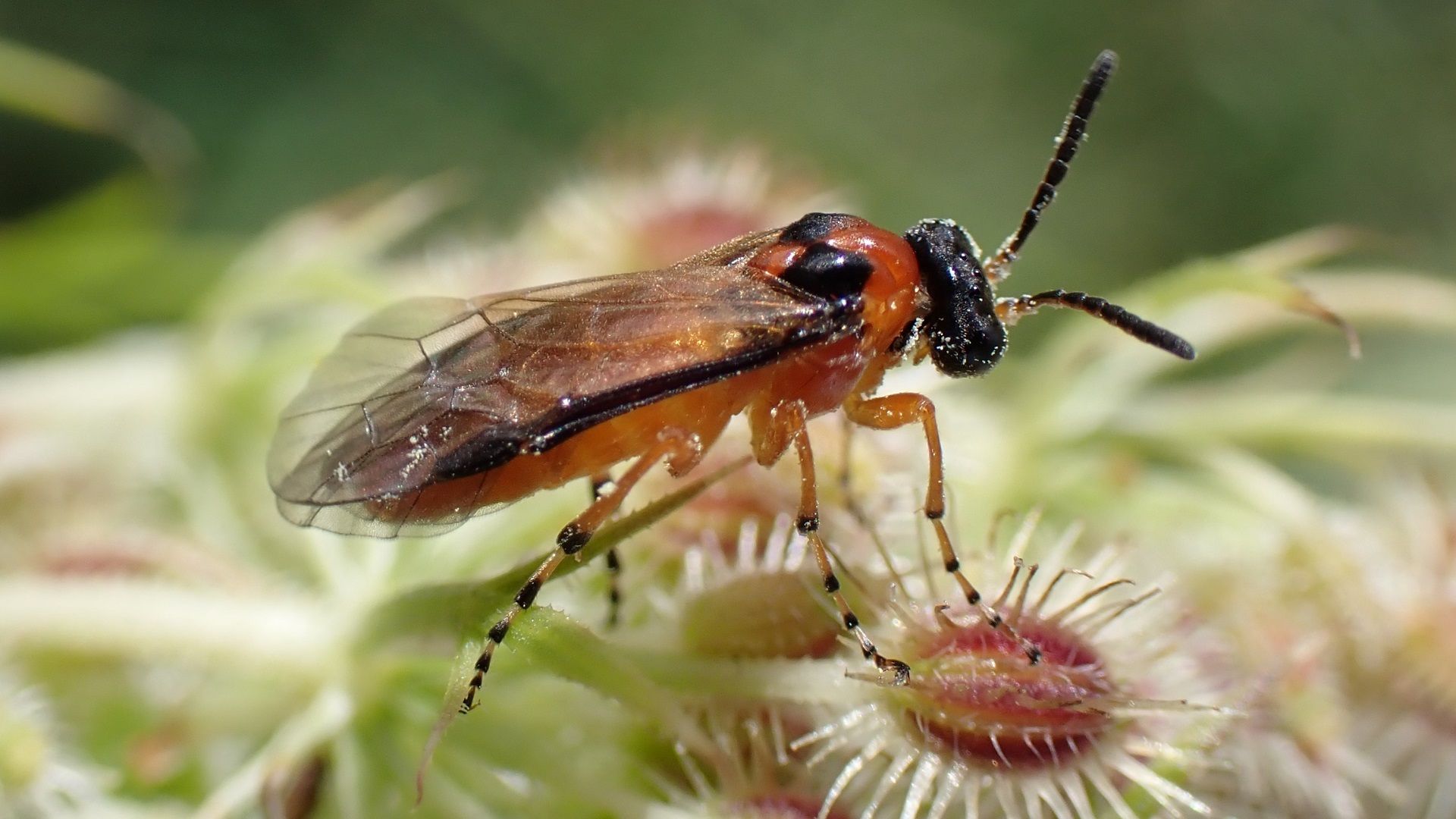

INSECTS
HYMENOPTERA / SAWFLIES
Female sawflies use saw-like ovipositors to cut into the plants to lay eggs, hence the common name 'Sawfly'. The main difference between sawflies and other Hymenoptera such as ants, bees, and wasps, is that adults lack a narrow waist.
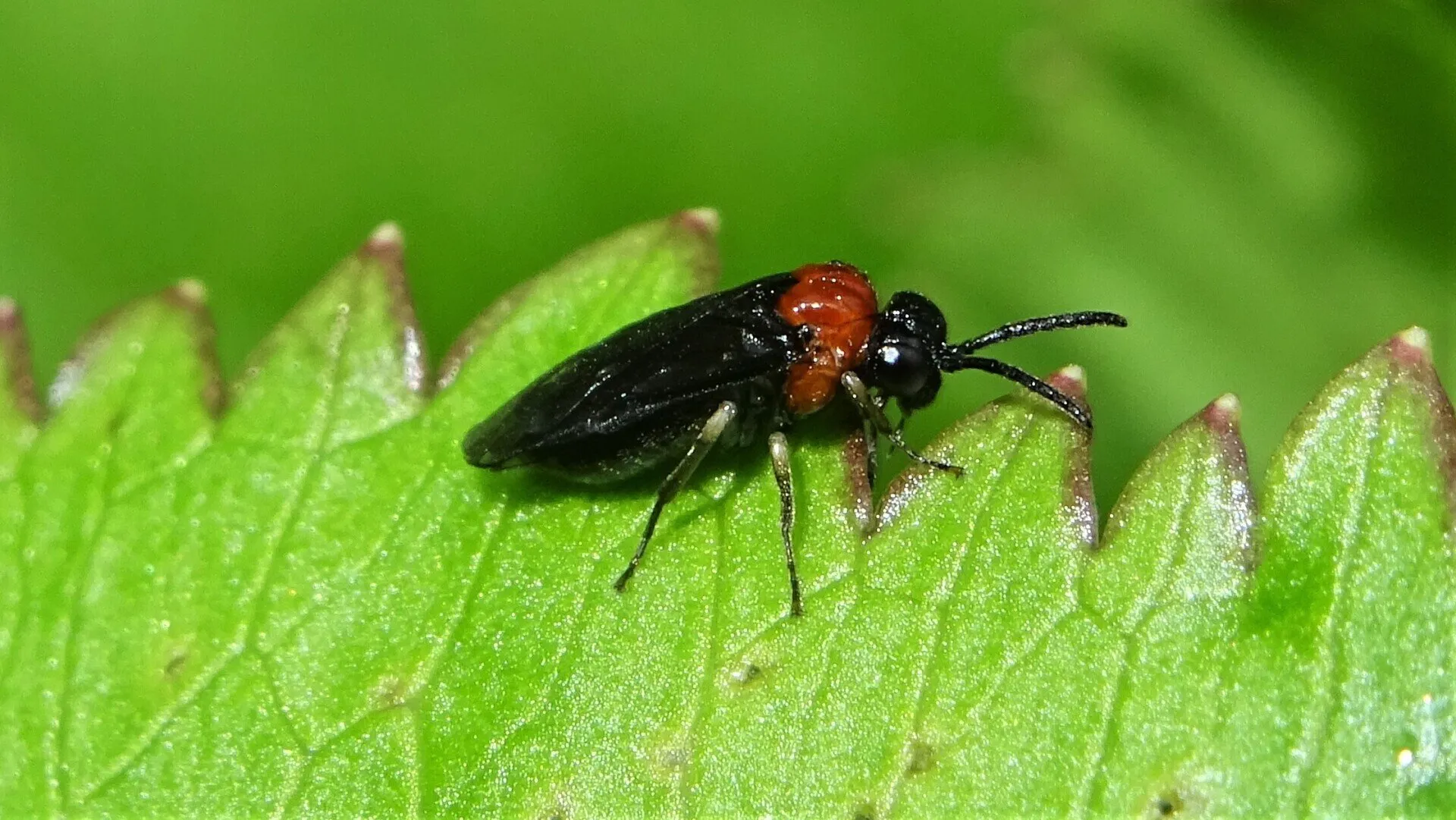
Slide title
Saddleback Grass-cutter Eutomostethus ephippium
©Raymond Small TQ4793 05/05/2022
Button
Saddleback Grass-cutter
Eutomostethus ephippium
(4-6mm) frequents meadows where its larvae feed on soft grasses. It flies from May to August and there may be two broods a year. The black legs have a pale band around the joint of the femora and tibia. It is also known as the
Black and Red Sawfly, however this species has two colour forms, the other version lacks red on the thorax and mesopleura and is mainly seen in northern England.
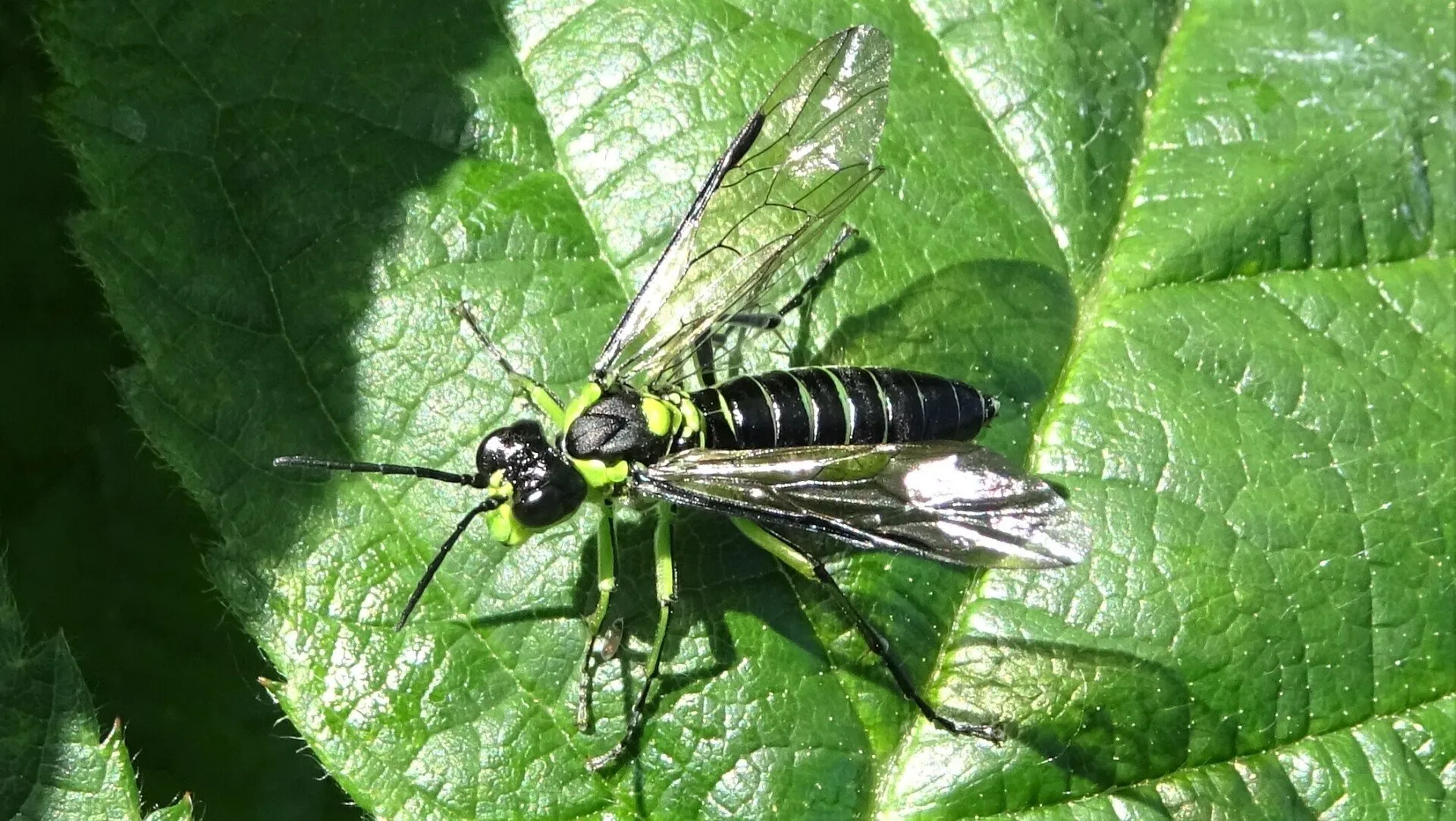
Slide title
Common Green Sawfly Tenthredo mesomela
©Raymond Small TQ4792 27/05/2022
Button
Common Green Sawfly Tenthredo mesomela is also known as the Black-backed Sawfly. It is large (9-13mm) with a black back and an apple green body, flying from May to July. Its larvae feed on a wide range of plants. Very similar to Tenthredo mioceras.
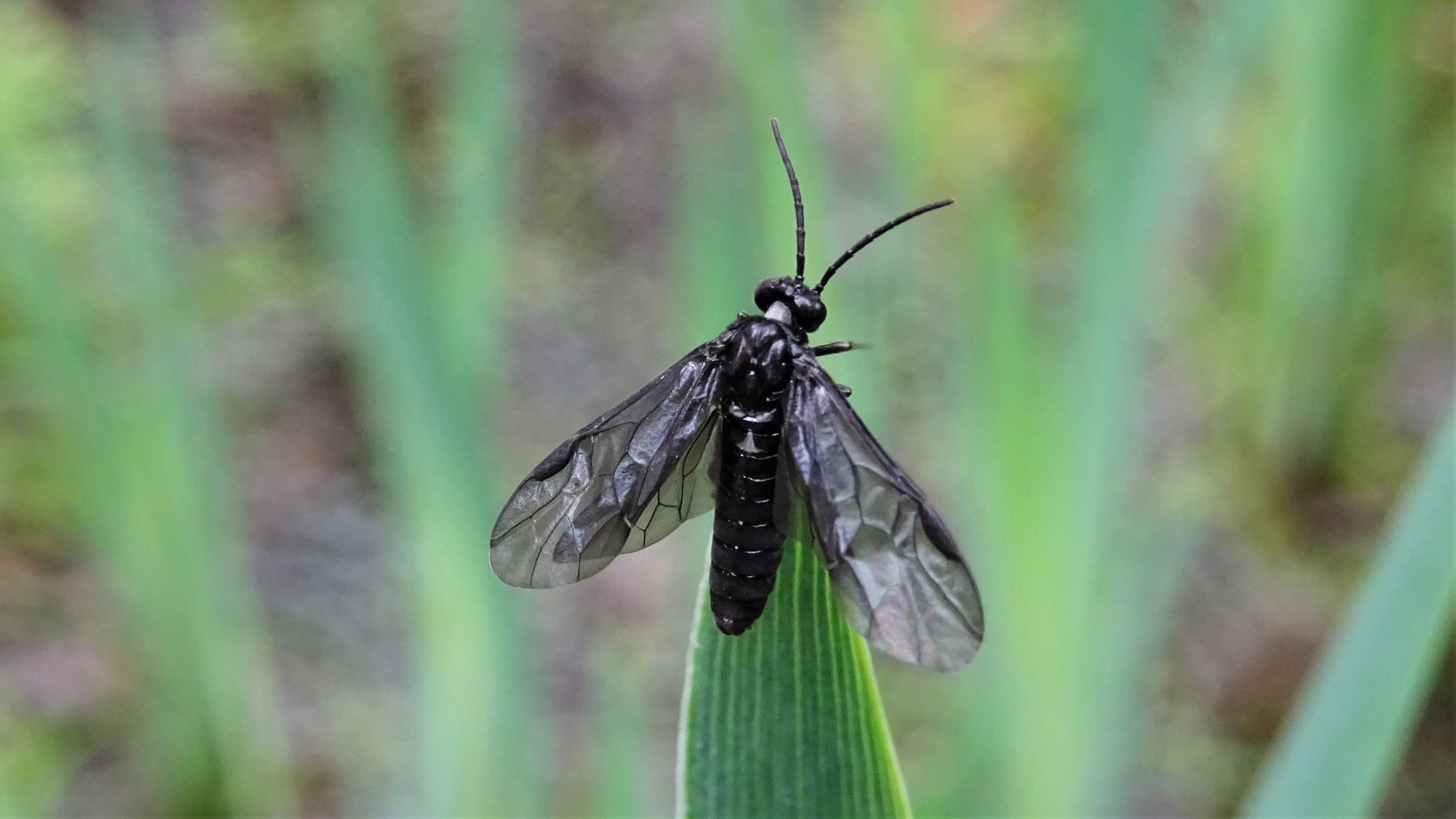
Slide title
Iris Sawfly Rhadinoceraea micans
©Raymond Small TQ4793 09/05/2023
Button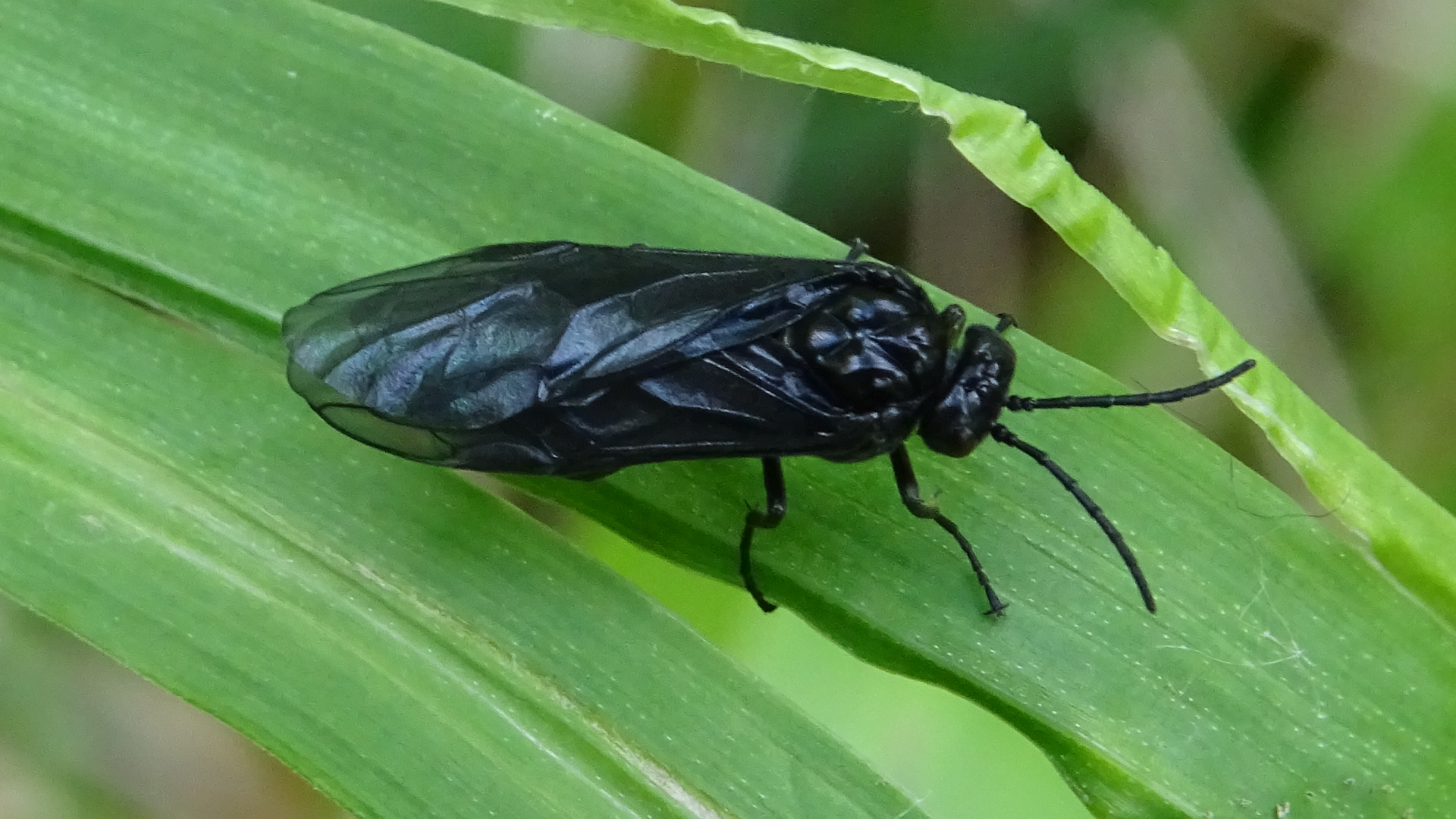
Slide title
Iris Sawfly Rhadinoceraea micans
©Raymond Small TQ4793 05/05/2022
Button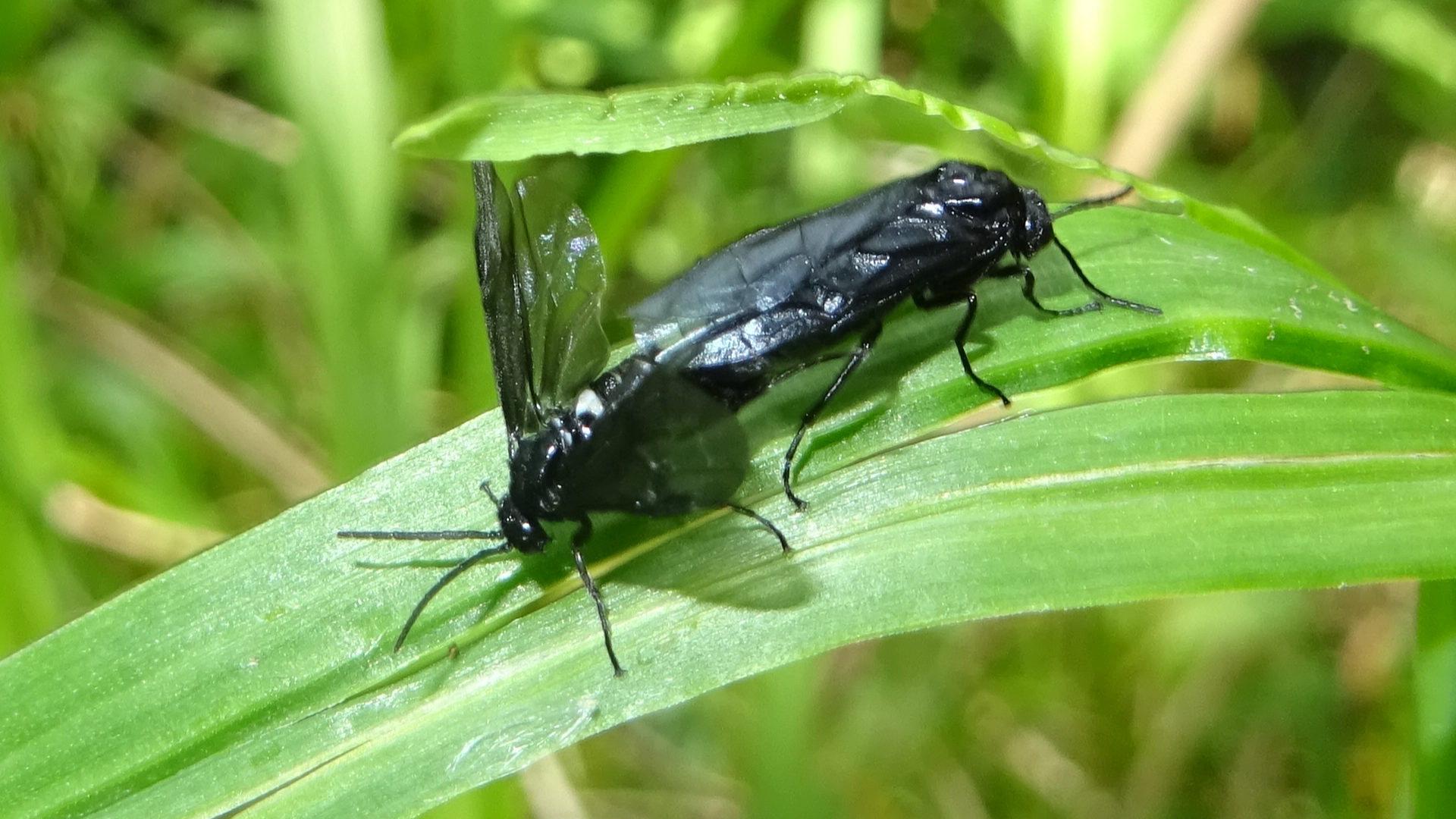
Slide title
Iris Sawfly Rhadinoceraea micans
©Raymond Small TQ4793 05/05/2022
Button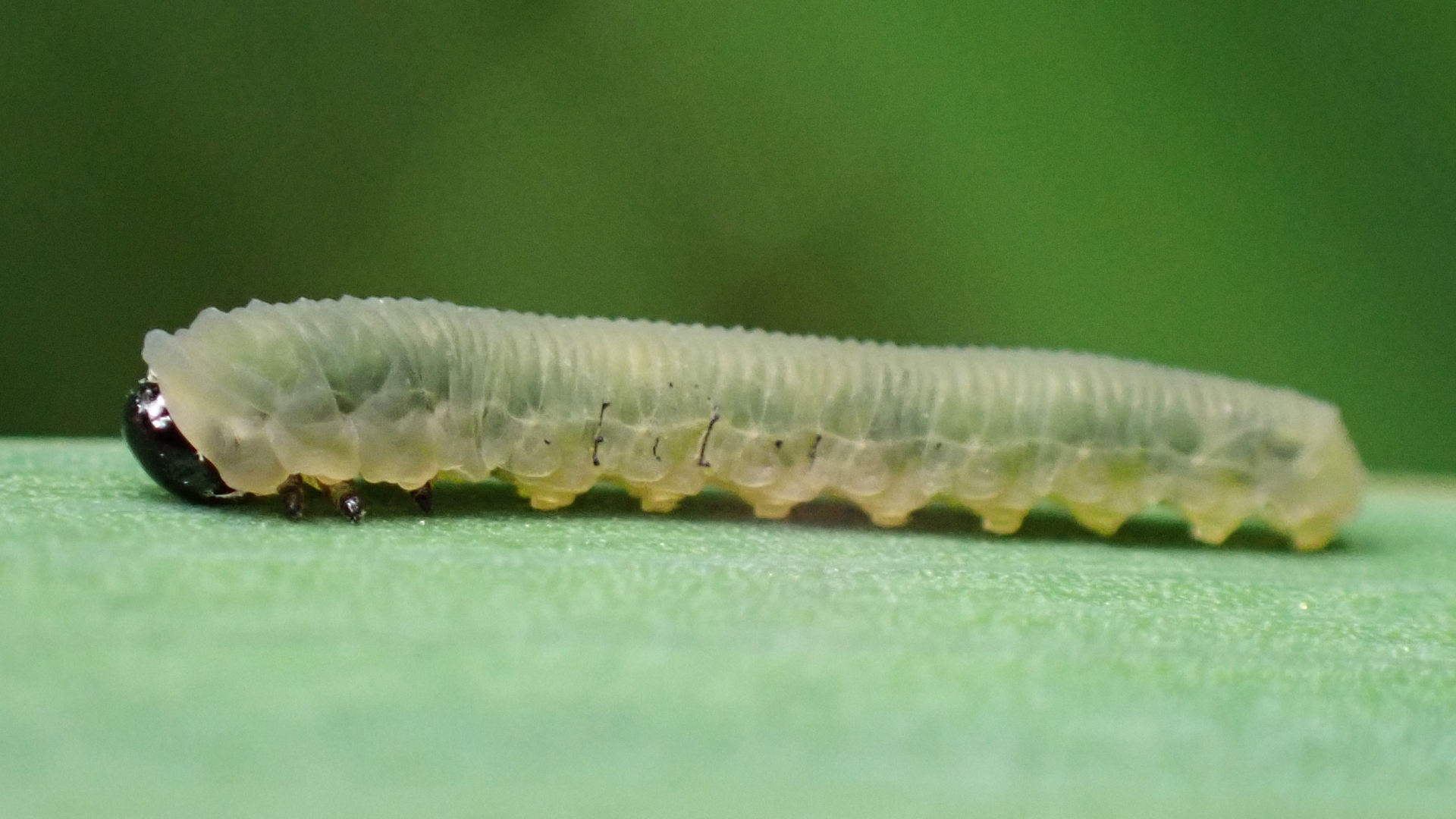
Slide title
Iris Sawfly Rhadinoceraea micans
©Raymond Small TQ4793 06/06/2024
Button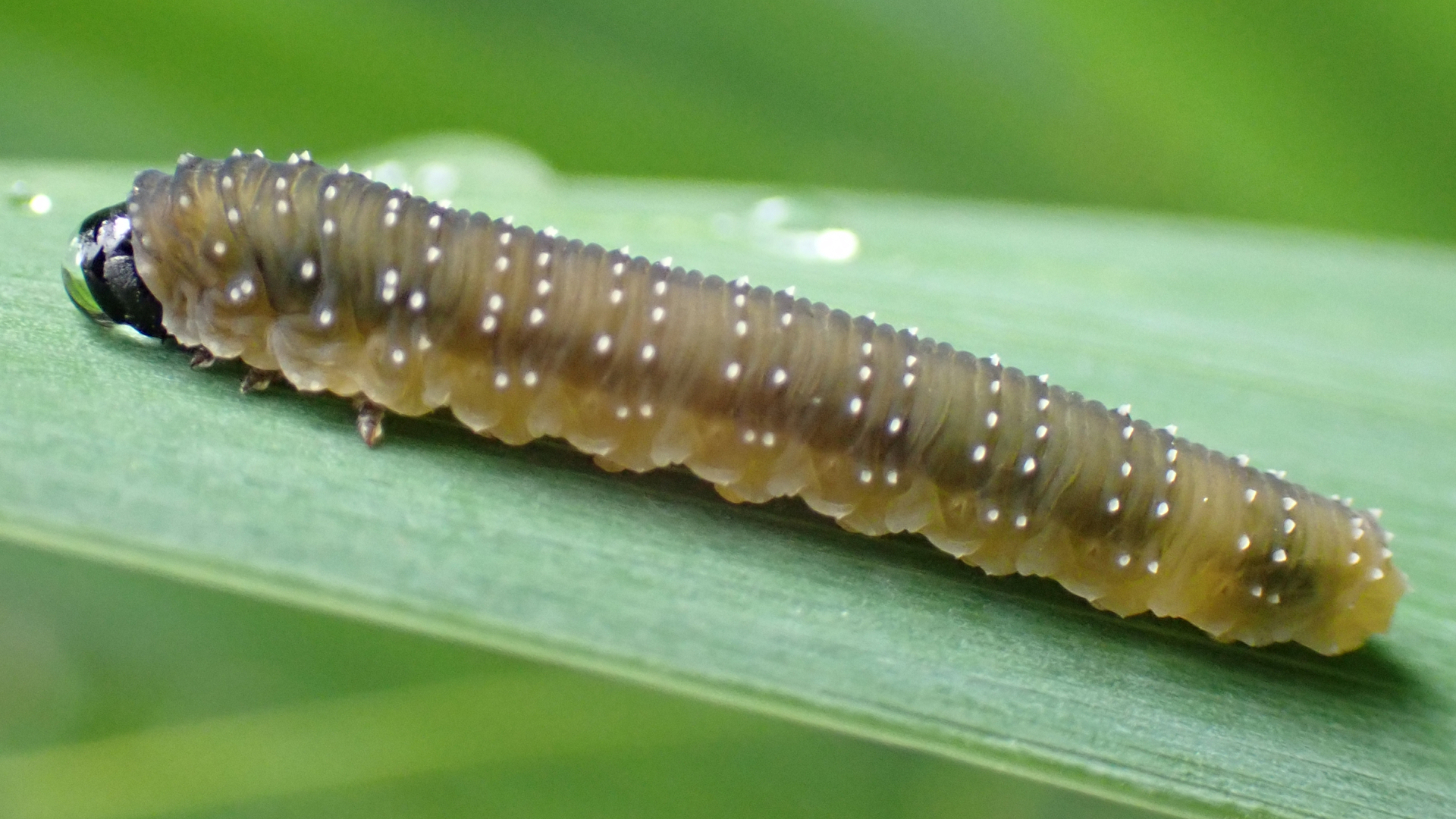
Slide title
Iris Sawfly Rhadinoceraea micans
©Raymond Small TQ4793 05/07/2024
Button
Iris Sawfly
Rhadinoceraea micans (7-8mm) is totally black and usually seen flying around Yellow Iris which is the larval foodplant.
Phymatocera aterrima has a similar appearance, but has longer antennae and feeds on Solomon's seal.
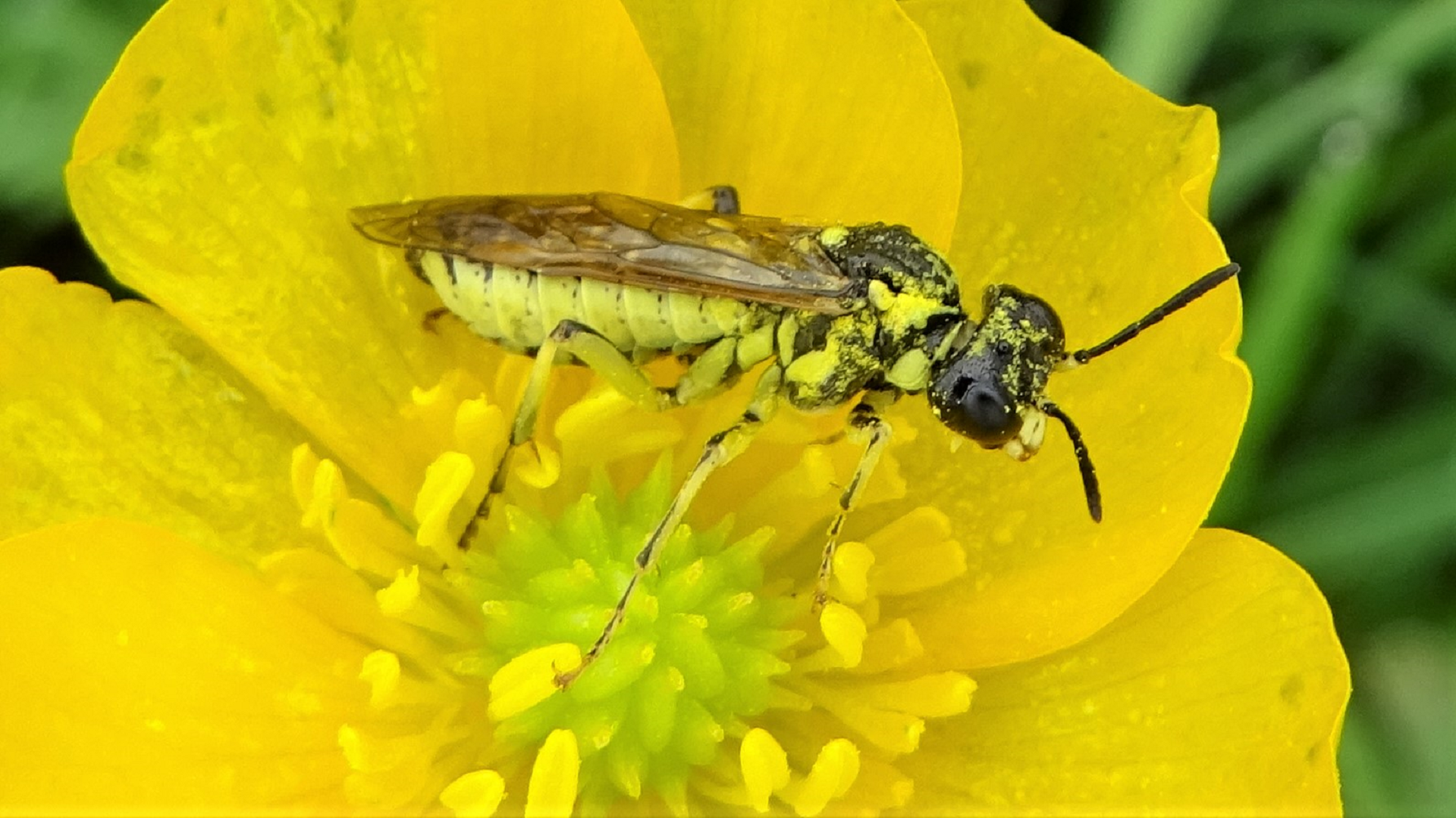
Slide title
Clover Sawfly Tenthredo arcuata/brevicornis/notha/schaefferi agg.
© Raymond Small TQ4792 31/05/2018
Button
Clover Sawfly Tenthredo arcuata (8-11mm) is one of four species that are very similar in appearance so this specimen was treated as the aggregate Tenthredo arcuata/brevicornis/notha/schaefferi agg. when recorded. Larvae feed on Clover and Vetchling.
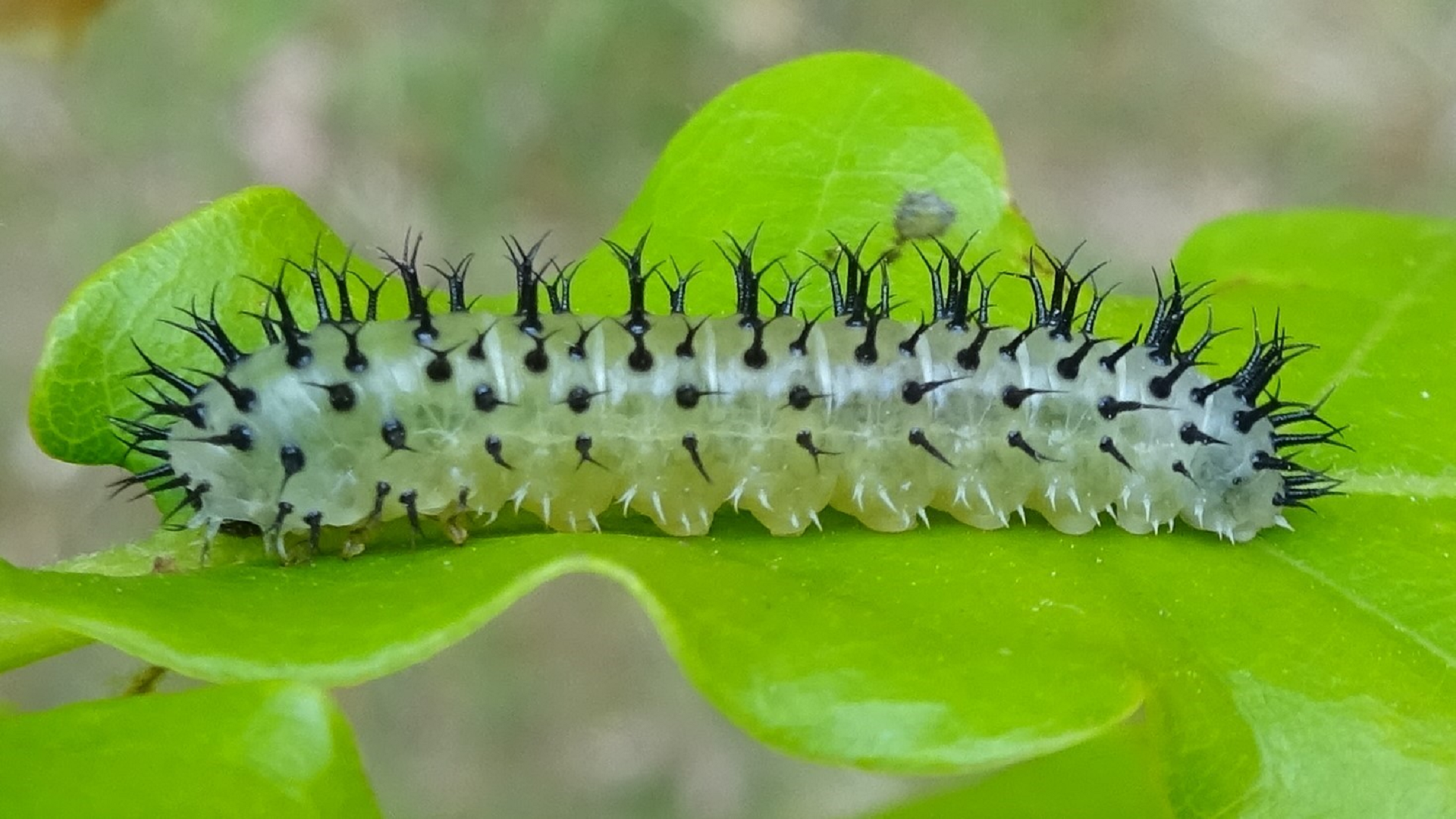
Slide title
Sawfly Larva Periclista sp.
© Raymond Small TQ4792 09/05/2017
Button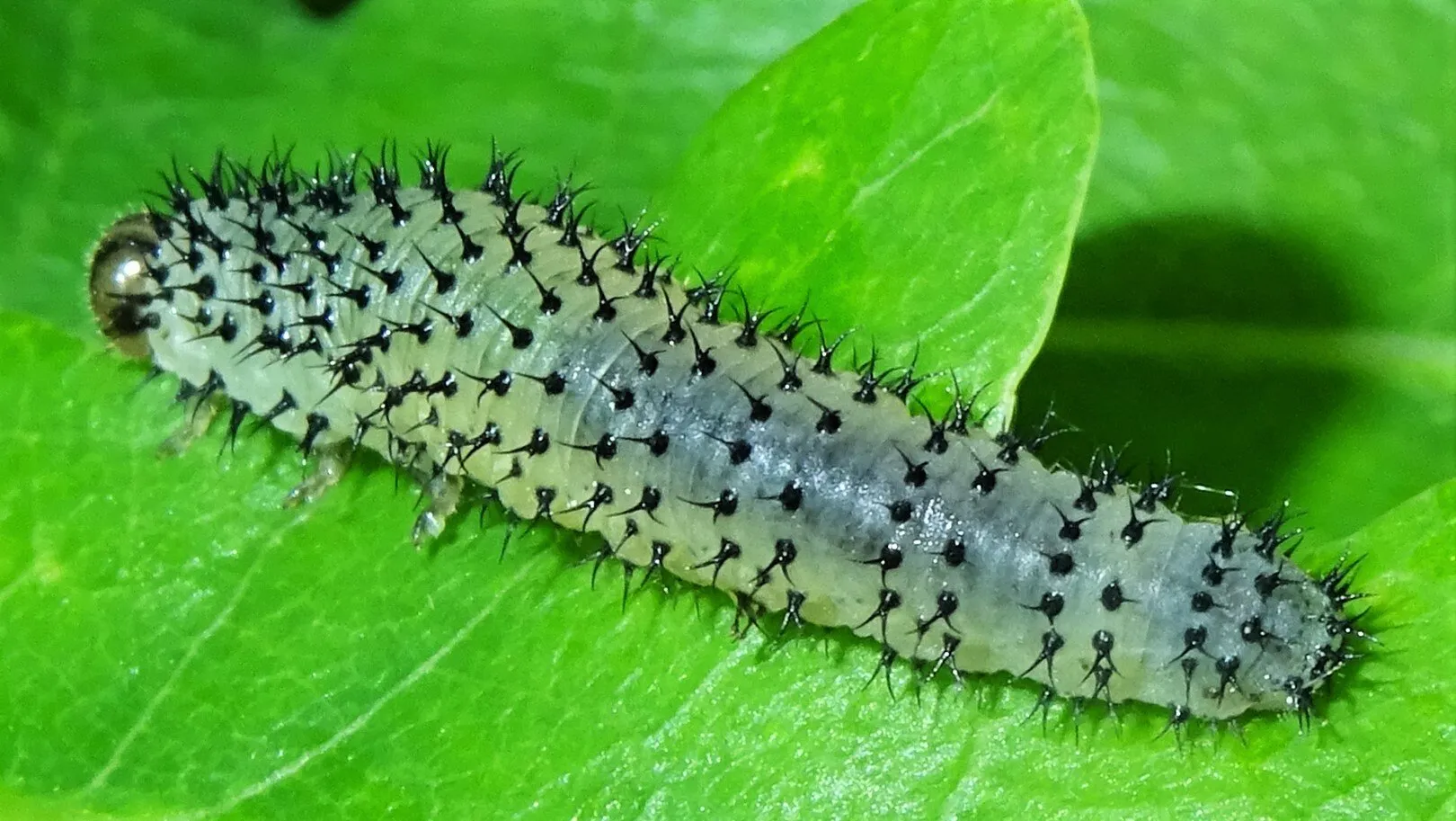
Slide title
Sawfly Larva Periclista sp.
© Raymond Small TQ4792 19/05/2022
Button
Three
Periclista sawflies occur in Britain which feed mainly on oak. Identification of the individual larvae can usually be done by studying the spine arrangement at the tip of the body.
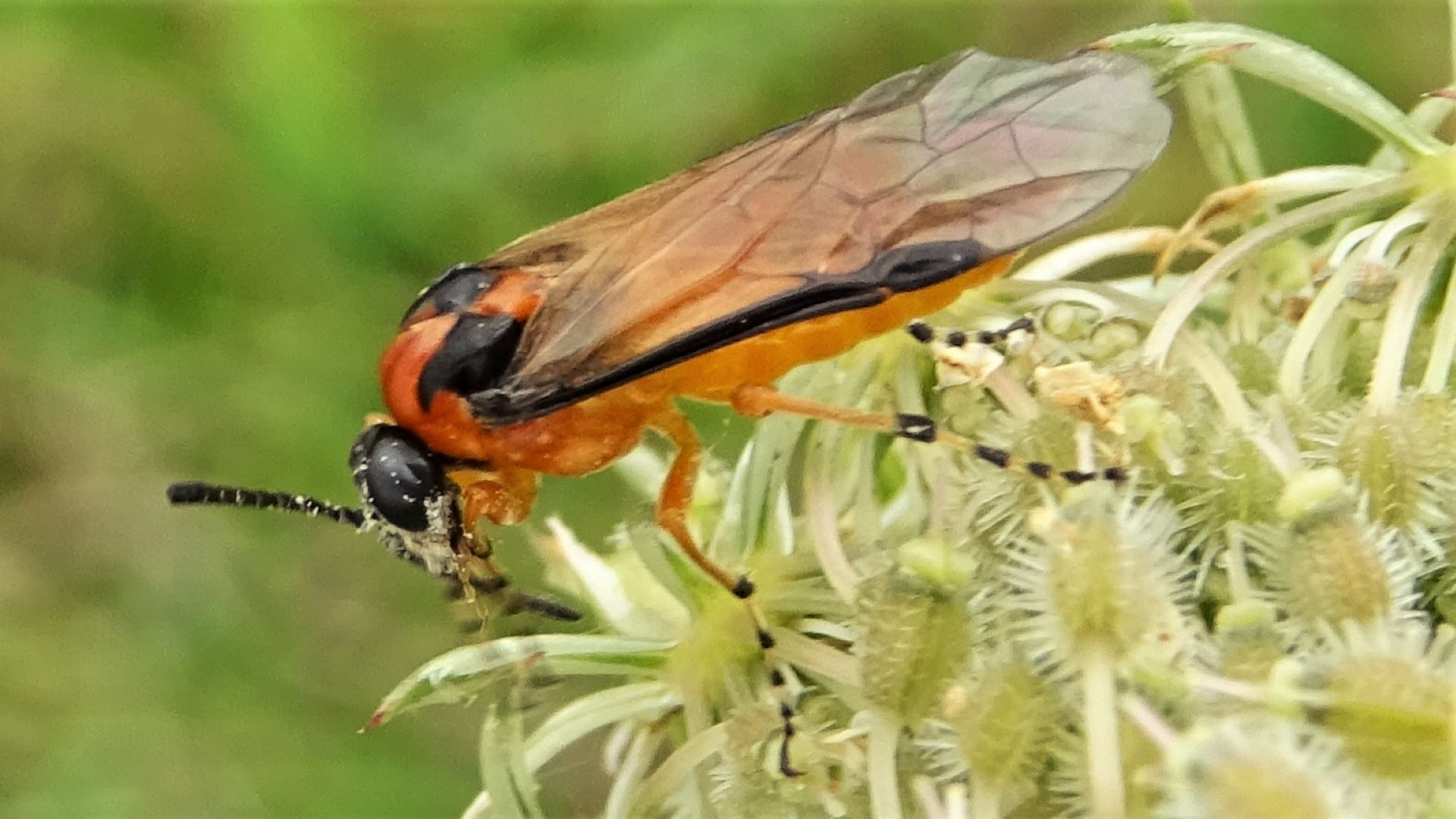
Slide title
Turnip Sawfly Athalia rosae
©Raymond Small TQ4792 02/08/2019
Button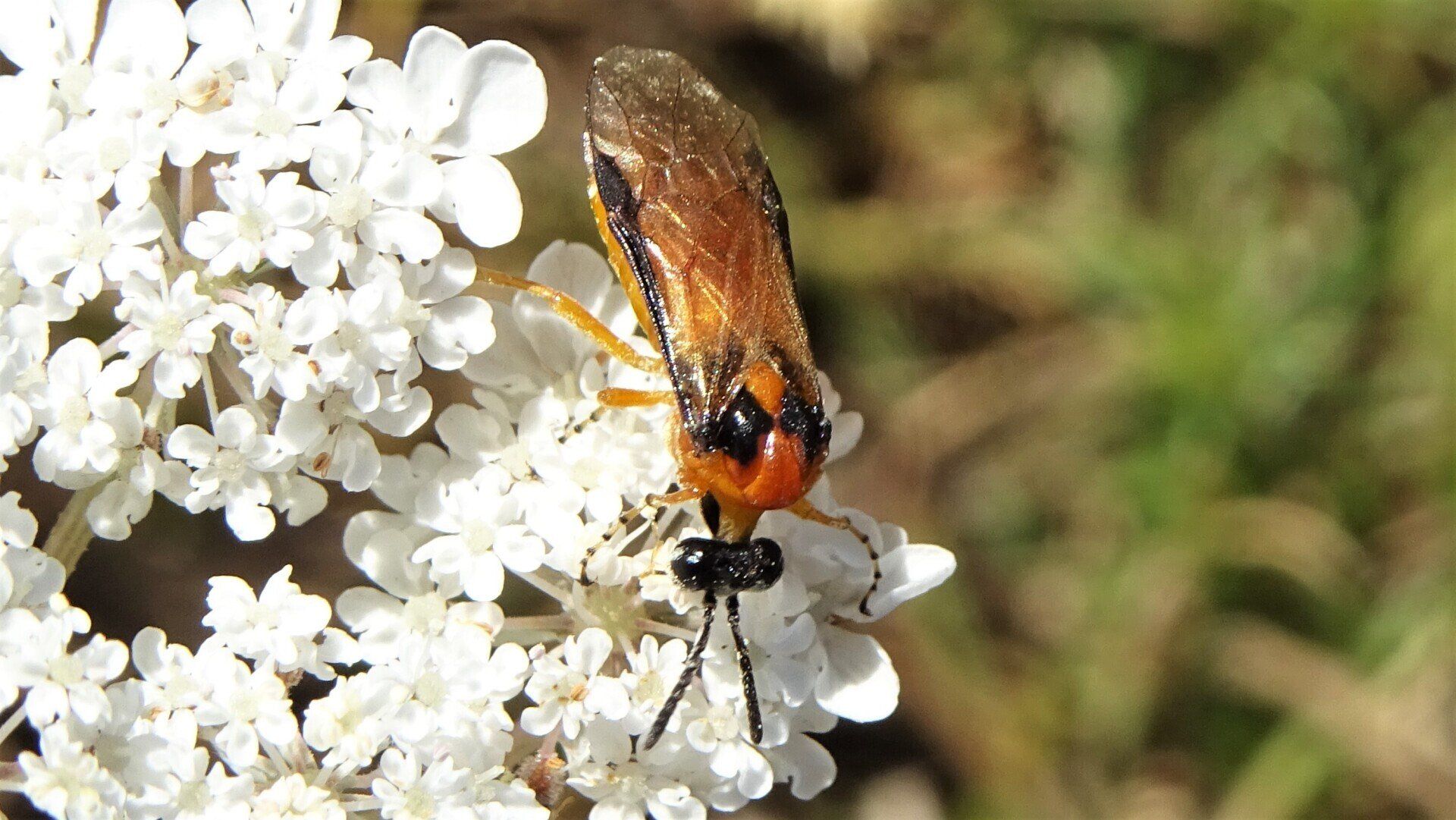
Slide title
Turnip Sawfly Athalia rosae
©Raymond Small TQ4792 07/08/2022
ButtonSlide title
Turnip Sawfly Athalia rosae
©Raymond Small TQ4792 25/08/2024
ButtonSlide title
Turnip Sawfly Athalia rosae
©Raymond Small TQ4792 25/08/2024
Button
Turnip Sawfly
Athalia rosae (7-8mm) is fairly easy to identify, with its orange thorax, abdomen and legs contrasted with black head and 'shoulder pads'. This species is also known as the Turnip Tigress, Cabbage Leaf Sawfly and Beet Sawfly.
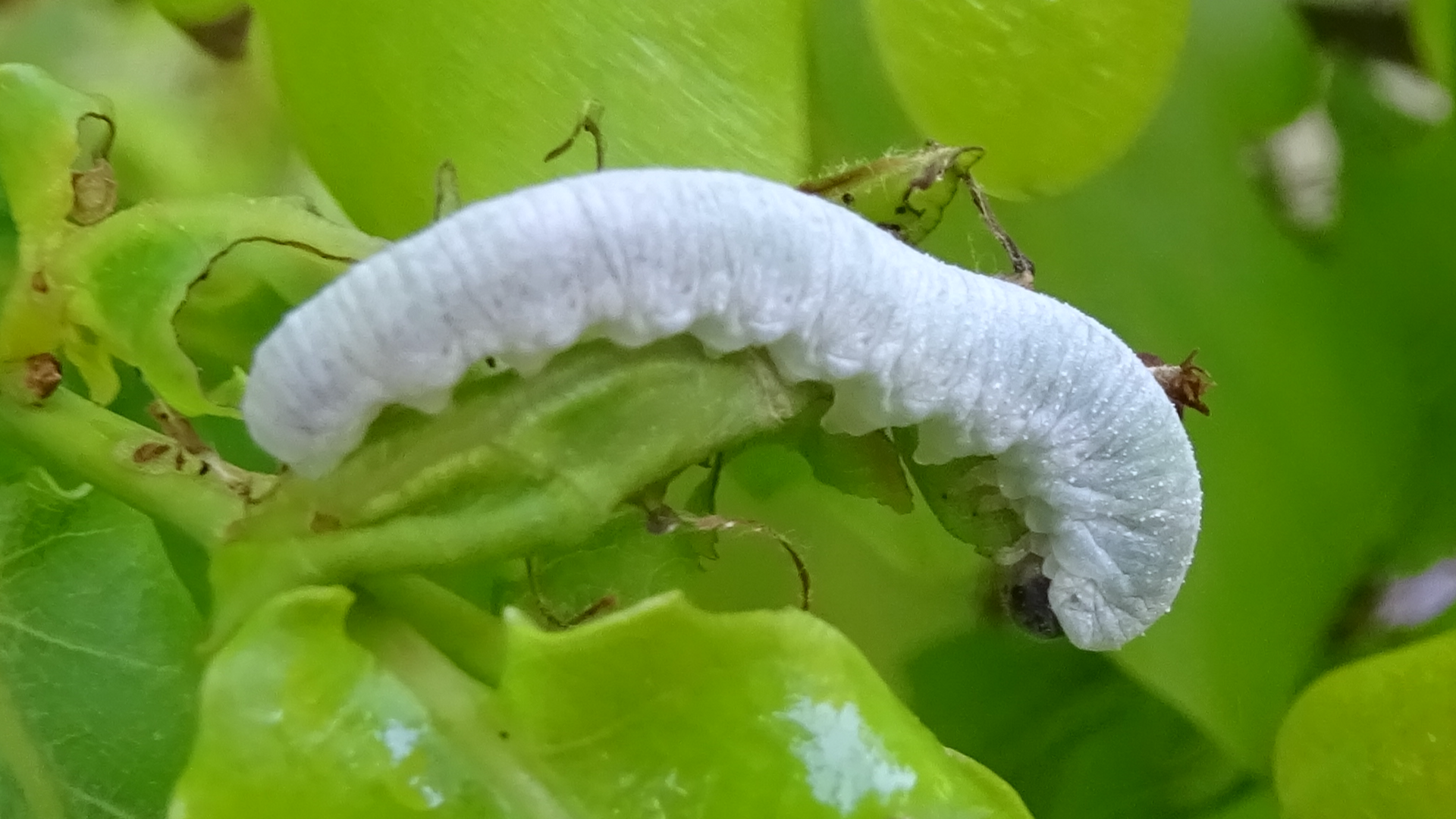
Slide title
Apethymus filiformis
©Raymond Small TQ4792 07/05/2020
Button
Sawfly
Apethymus filiformis flies late in the year and overwinters as an egg. Its bluish larvae emerges in spring to feed on deciduous trees.
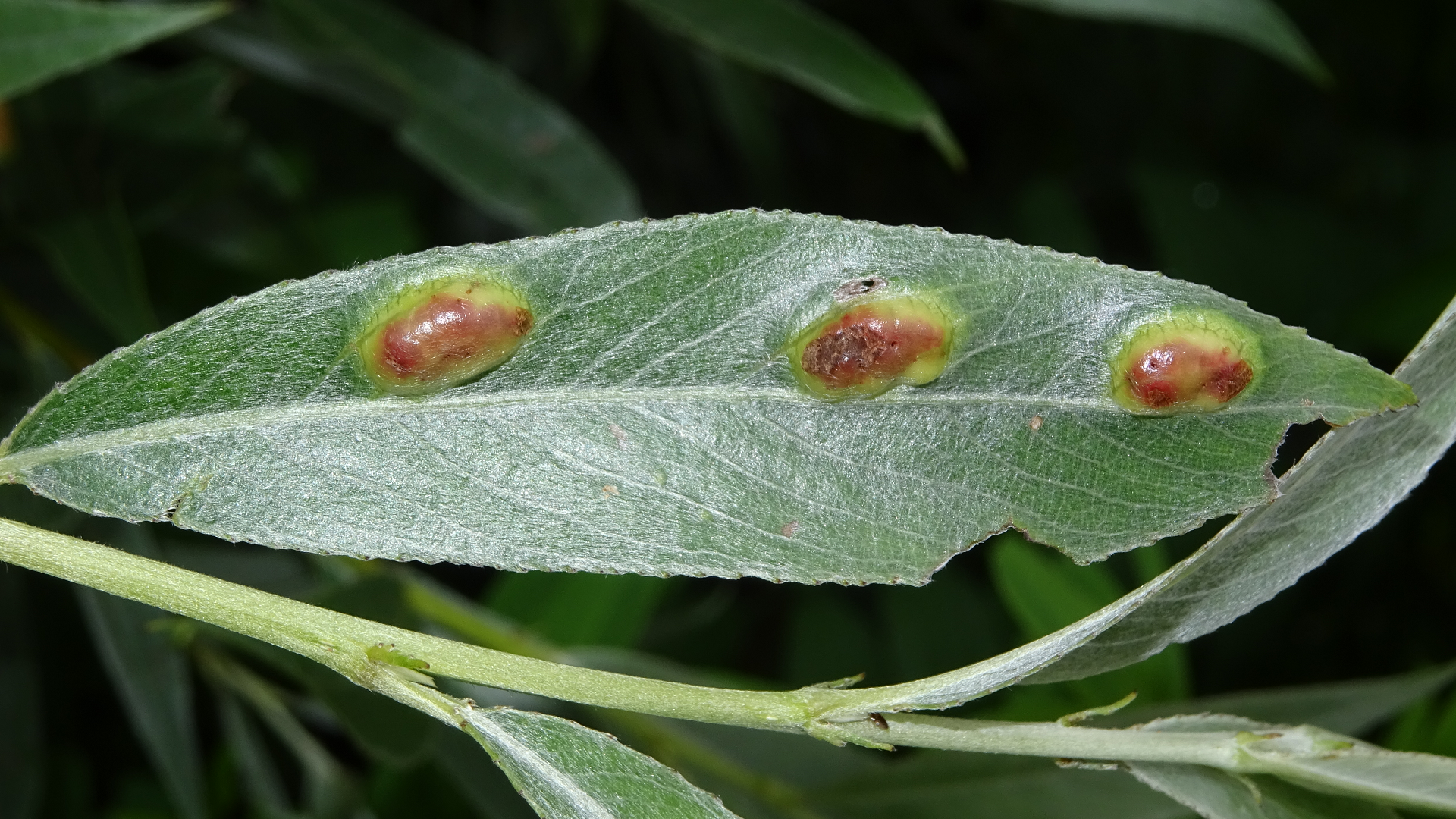
Slide title
Kidney Bean Gall Euura proxima
©Raymond Small TQ4792 19/06/2019
Button
Willow Bean-galler Euura proxima is a small Sawfly (3-5mm) that causes Kidney Bean Galls to appear on narrow-leaved willows. Often there is more than one gall on a leaf. The galls are green becoming reddish.

Slide title
Willow Gall Sawfly Euura pedunculi
©Raymond Small TQ4692 19/08/2019
Button
Willow Gall Sawfly
Eupontania pedunculi causes Hairy Pea Galls on the underside of Sallow leaves. A tiny circular shiny yellowish patch appears on the upper leaf surface which can be flush or very slightly raised.
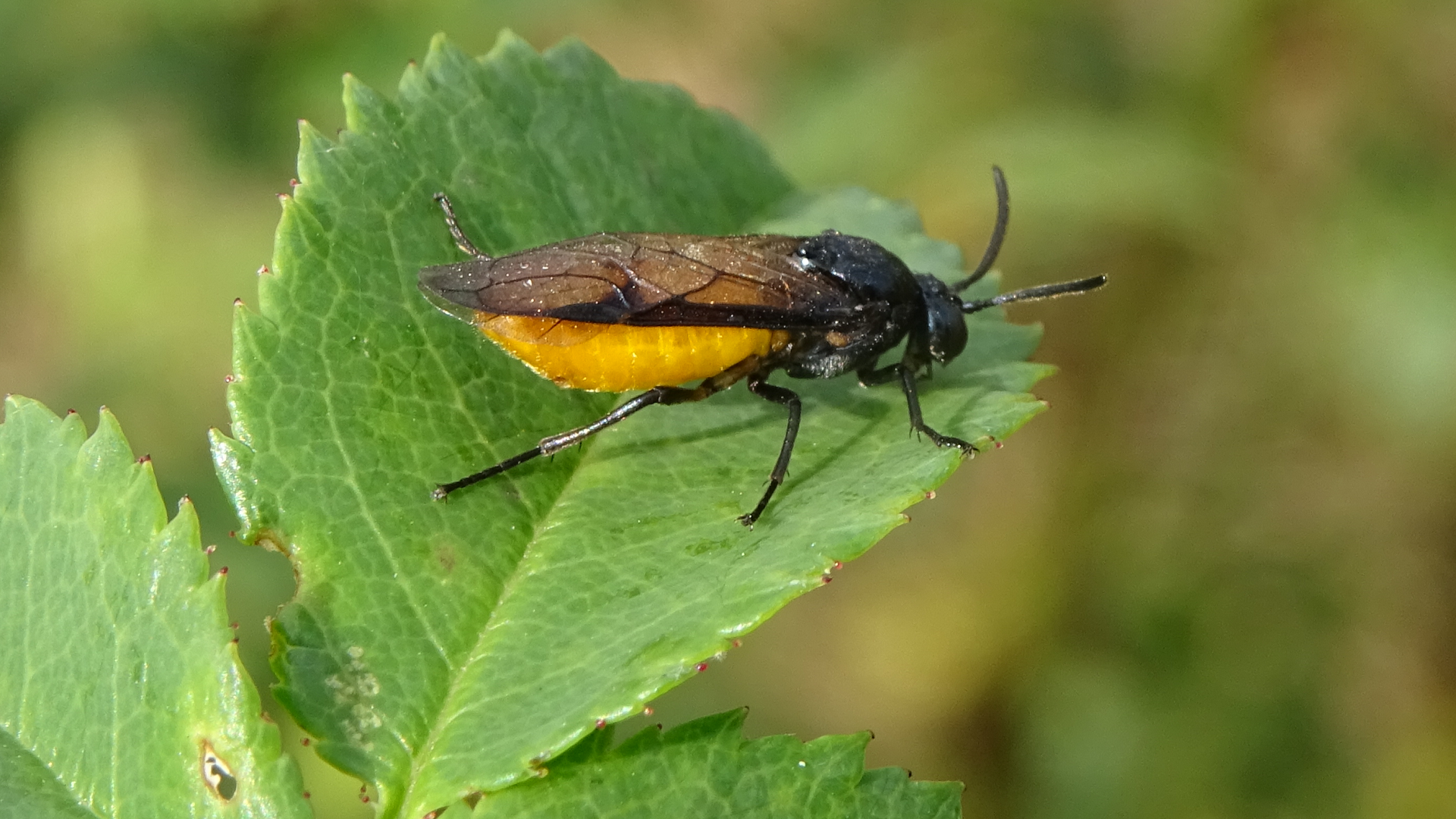
Slide title
Large Rose Sawfly Arge pagana
©Raymond Small TQ47659297 12/08/2019
Button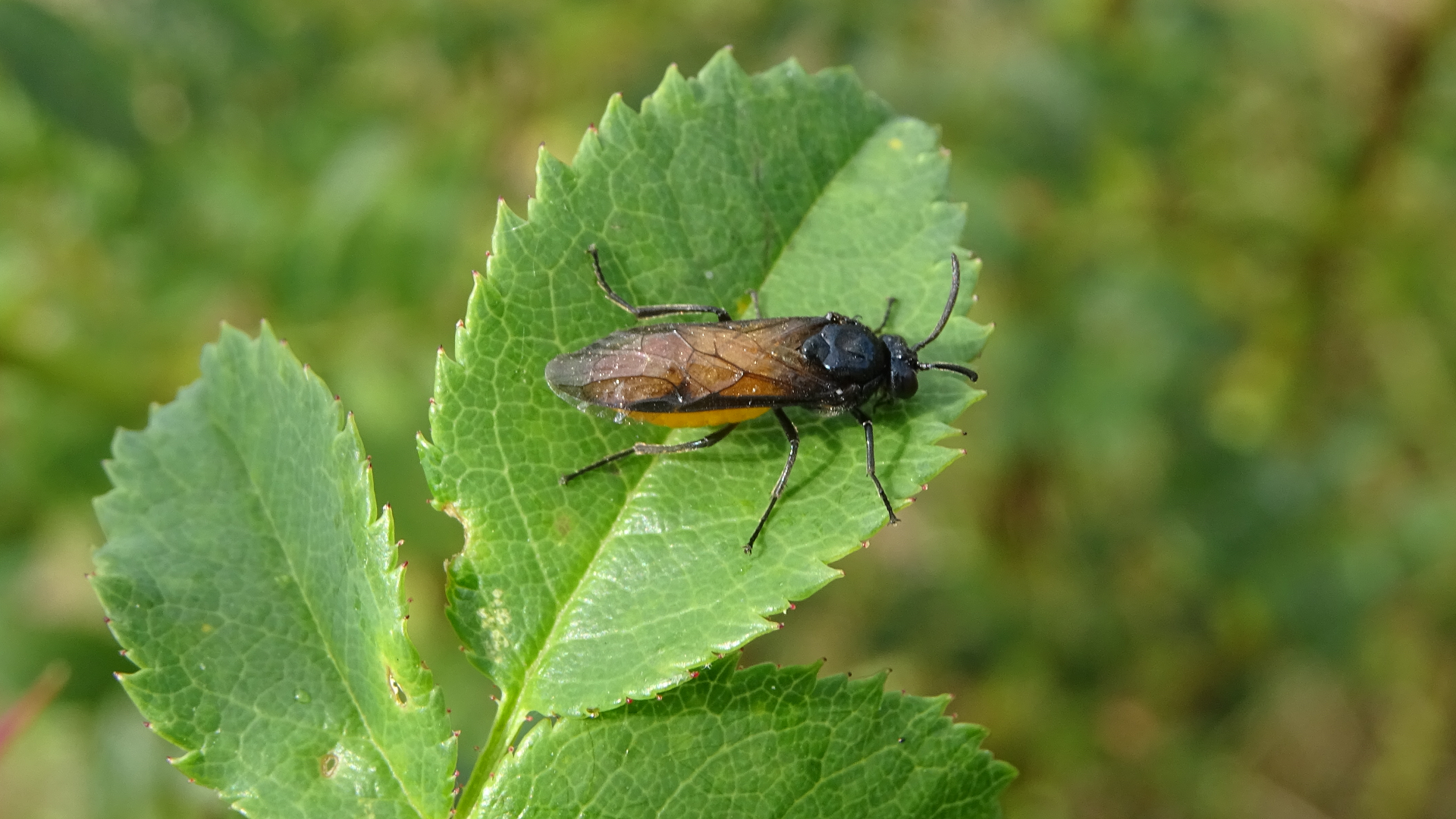
Slide title
Large Rose Sawfly Arge pagana
©Raymond Small TQ47659297 12/08/2019
Button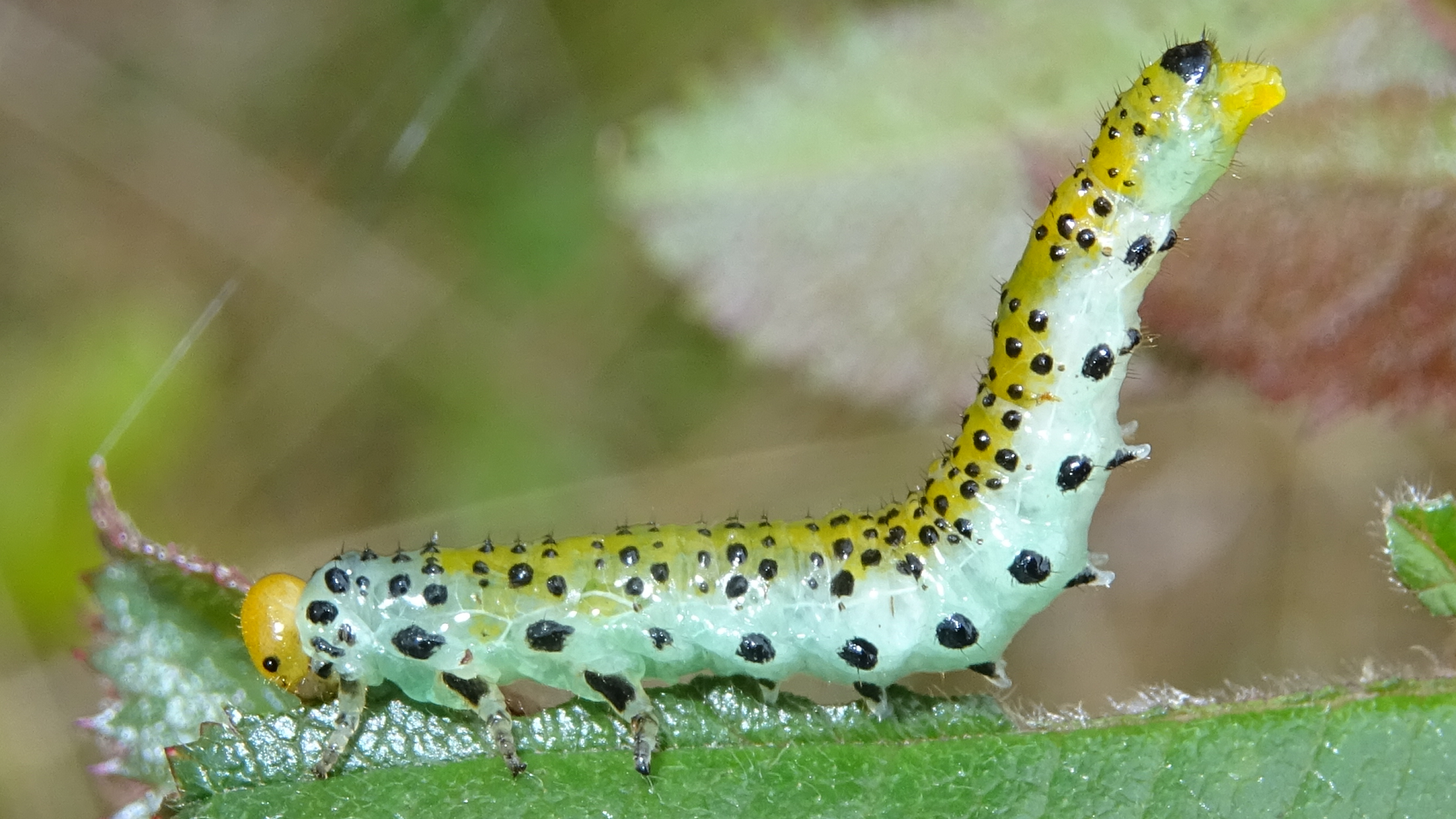
Slide title
Large Rose Sawfly Arge pagana
©Raymond Small TQ4793 12/09/2018
Button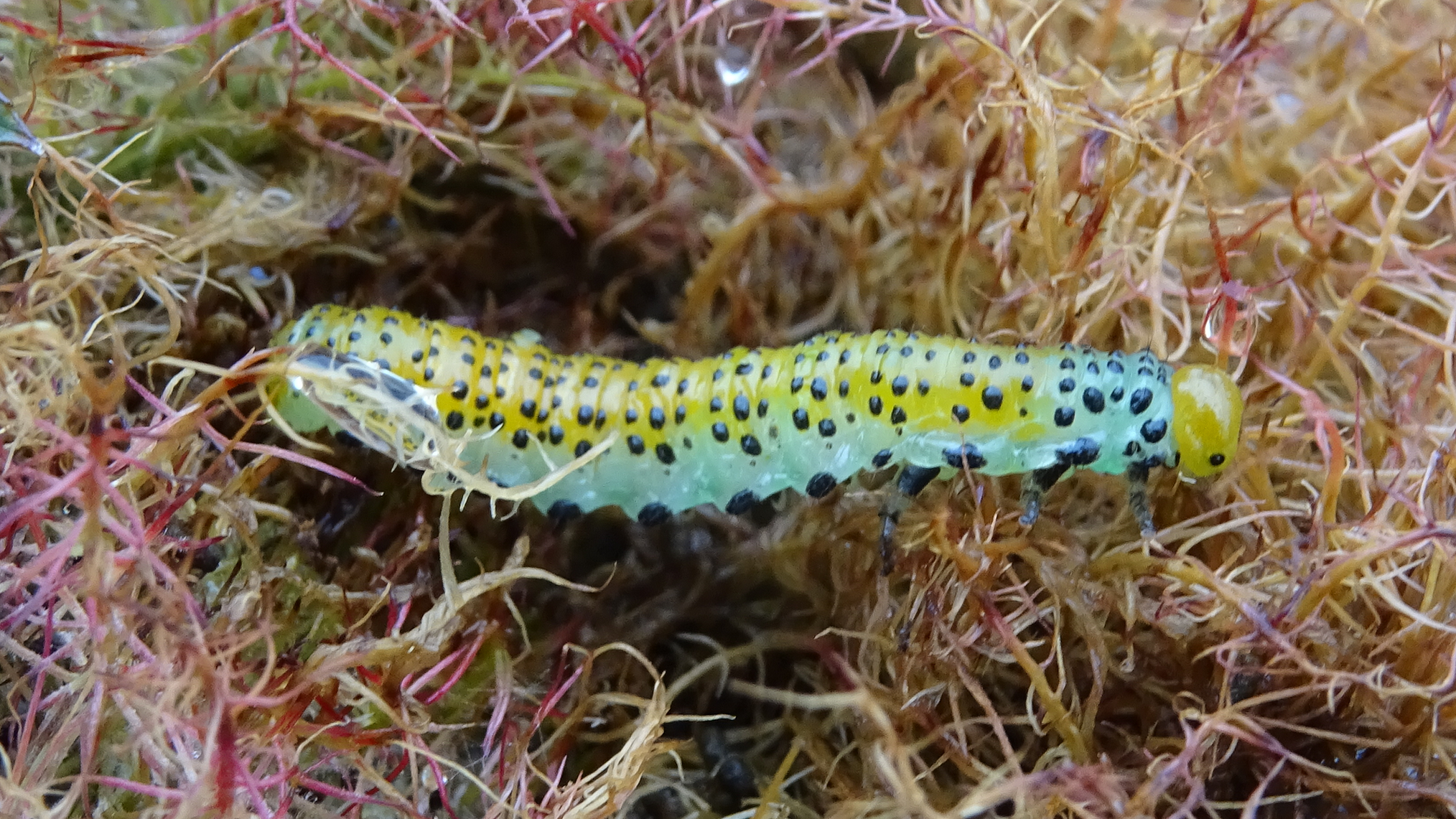
Slide title
Large Rose Sawfly Arge pagana
©Raymond Small TQ4793 12/09/2018
Button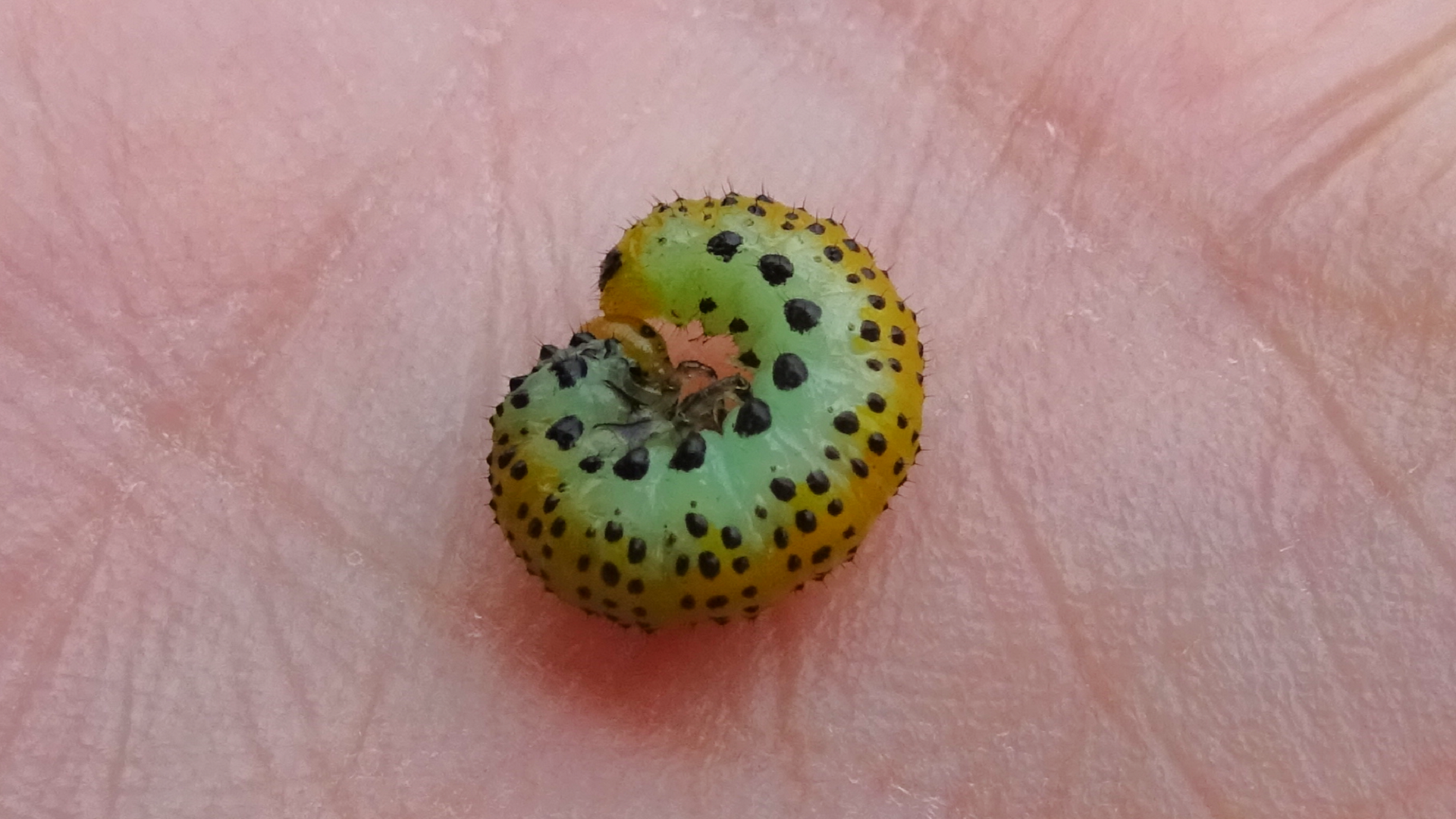
Slide title
Large Rose Sawfly Arge pagana
©Raymond Small TQ4793 12/09/2018
Button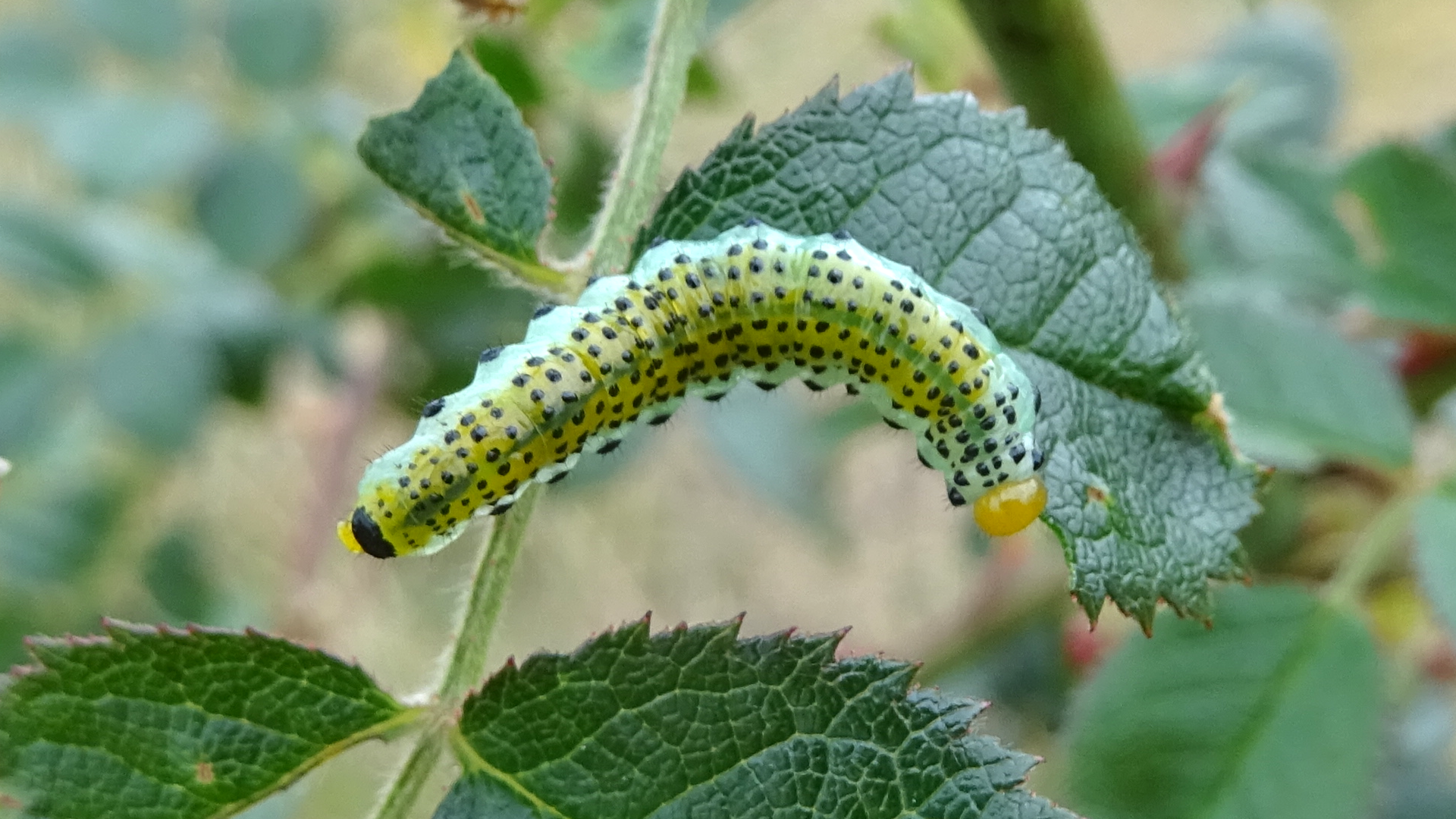
Slide title
Large Rose Sawfly Arge pagana
©Raymond Small TQ4793 12/09/2018
Button
Large Rose Sawfly
Arge pagana (7-9mm) is a common species in the southern England that flies from May to September. The pronotum, tegulae and parts of the legs are black and the wings appear smoky coloured. The larvae feed in groups on the young Dog-rose leaves. The hairs on the larval heads are normally pale, the supra-anal black mark is usually entire, and the lateral longitudinal rows of dots are aligned. This species is also known as the
Common Rose Fusehorn.
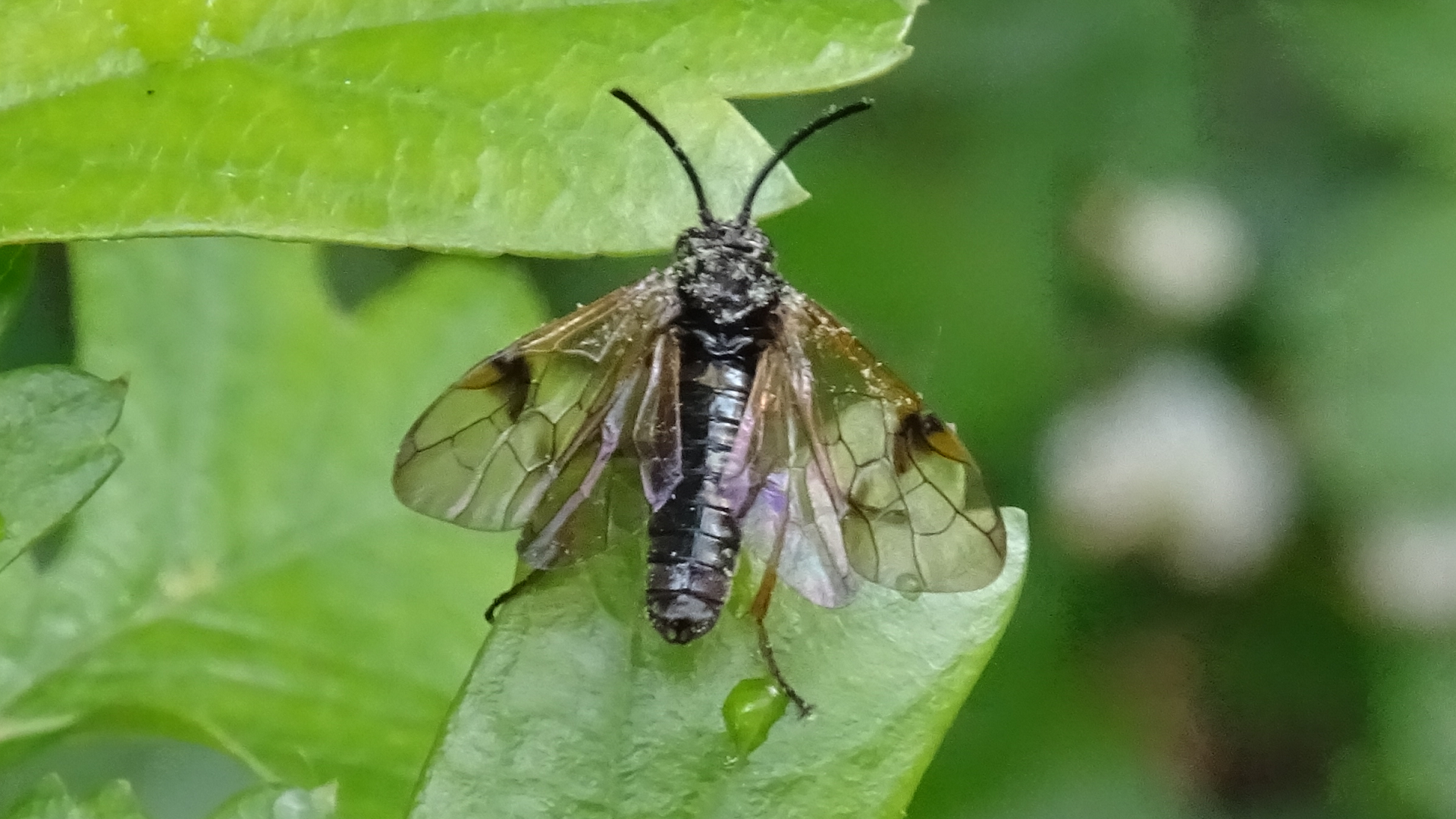
Slide title
Bronze Fusehorn Arge ustulata
©Raymond Small TQ4692 19/05/2021
Button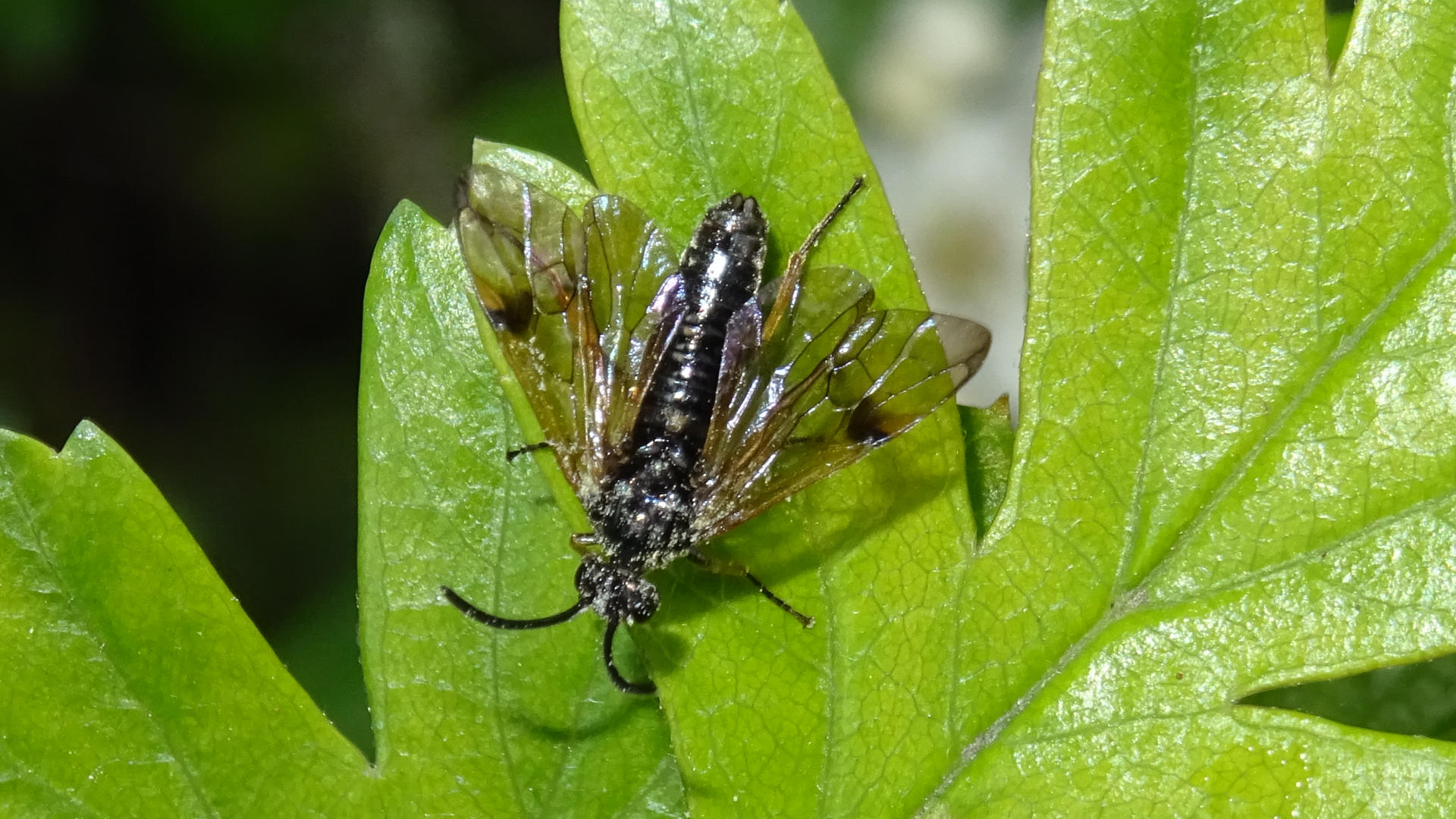
Slide title
Bronze Fusehorn Arge ustulata
©Raymond Small TQ4692 19/05/2021
Button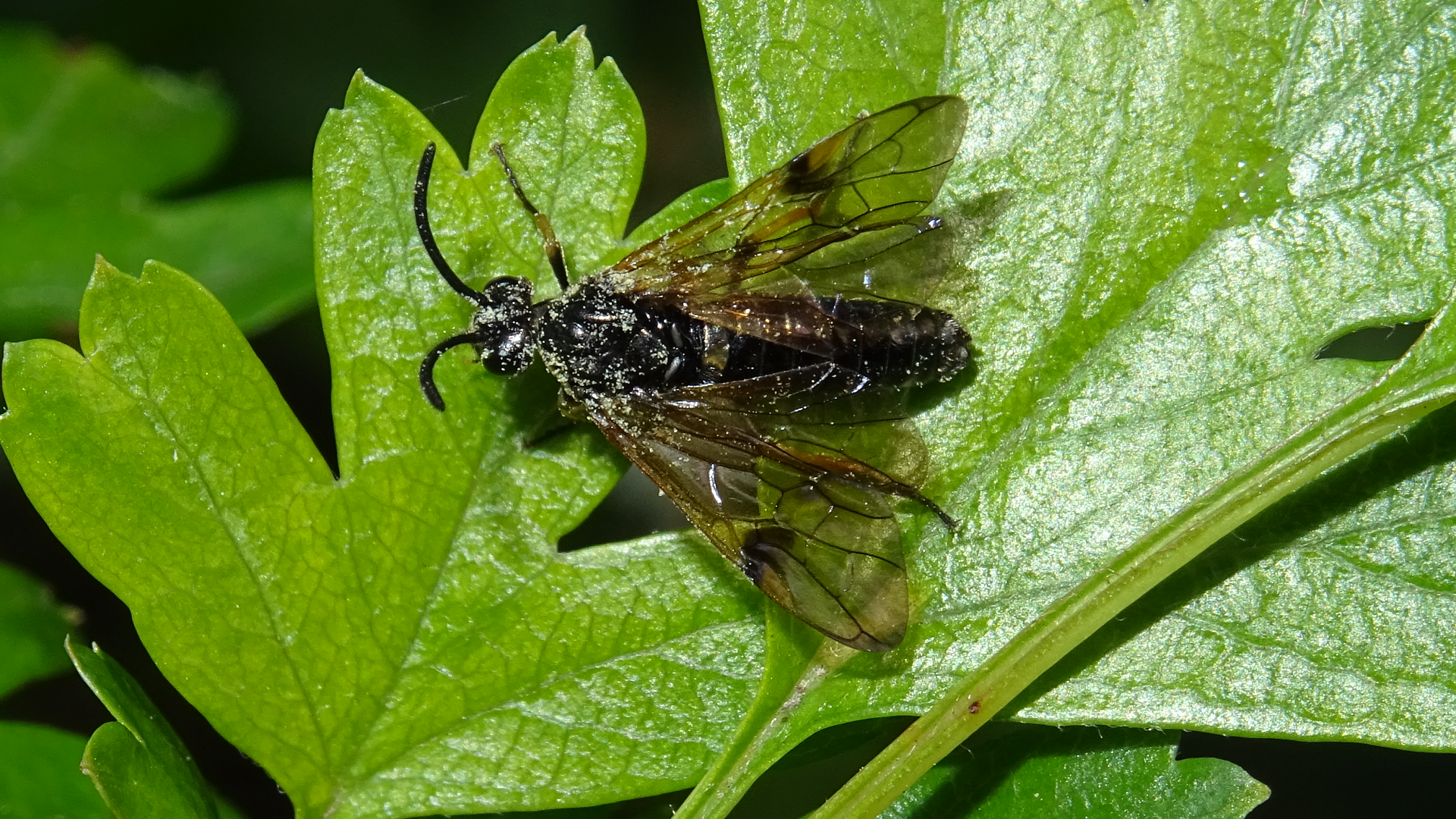
Slide title
Bronze Fusehorn Arge ustulata
©Raymond Small TQ4692 19/05/2021
Button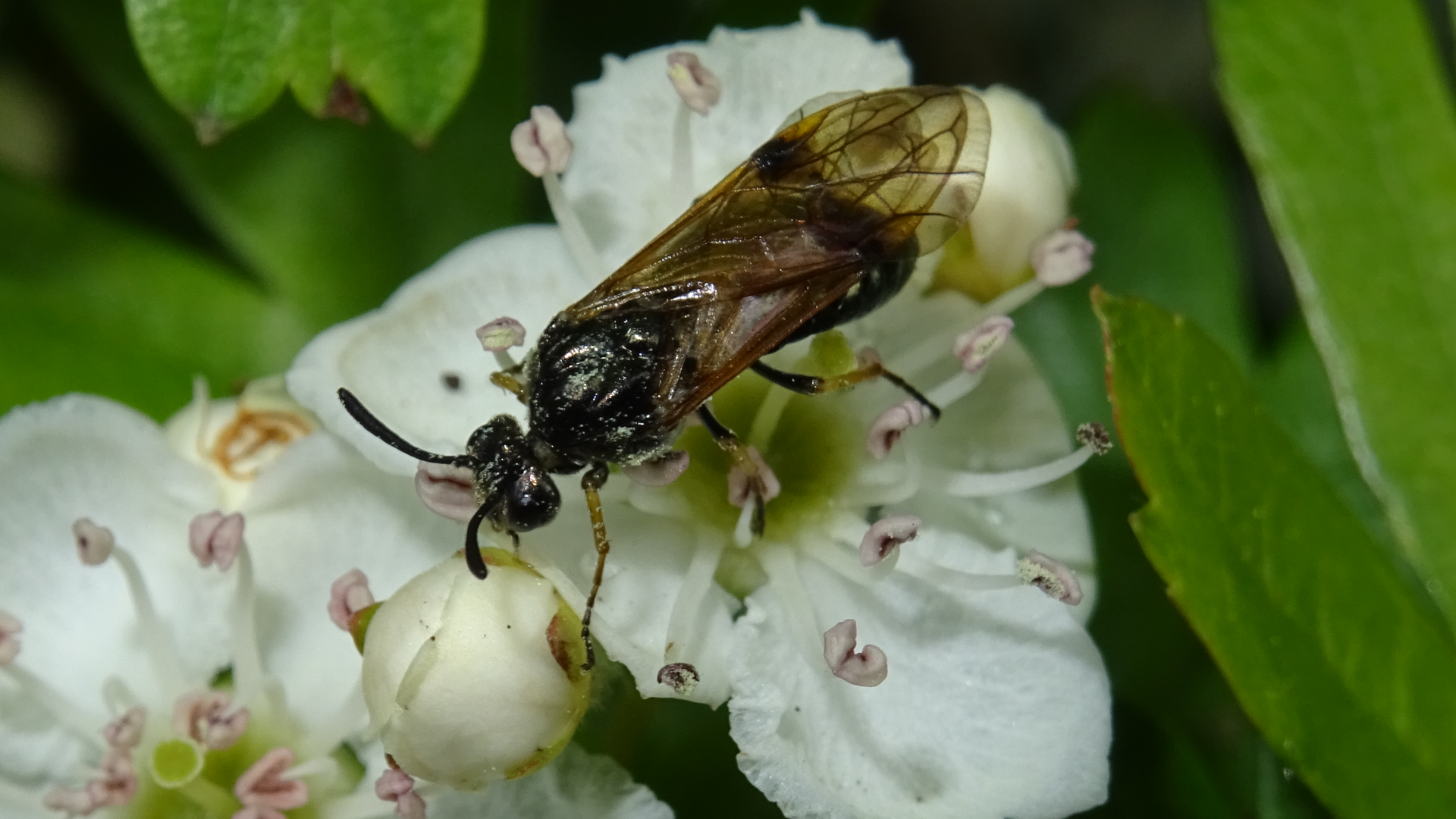
Slide title
Bronze Fusehorn Arge ustulata
©Raymond Small TQ4692 19/05/2021
Button
Bronze Fusehorn
Arge ustulata (7-10mm) flies from May to July. Its larvae feed on Hawthorn, Birch and Willow.

Slide title
Social Pear Spinner Neurotoma saltuum
©Raymond Small TQ4793 05/07/2017
Button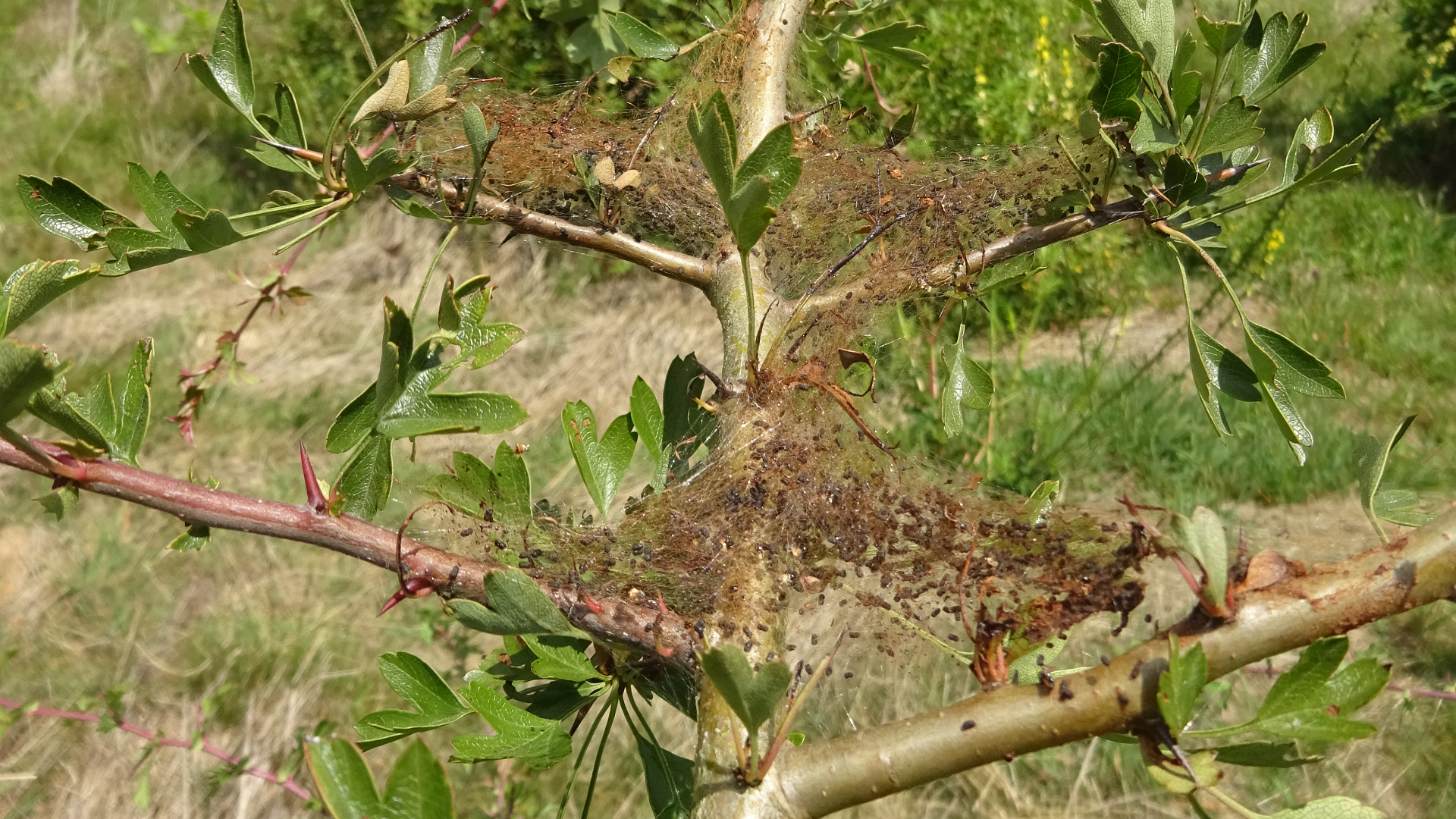
Slide title
Social Pear Spinner Neurotoma saltuum
©Raymond Small TQ4793 05/07/2017
Button
Social Pear Spinner
Neurotoma saltuum
has larvae that live and feed in large communal webs on woody members of Pear, Hawthorn, Blackthorn and other members of the Rosaceae family. The adults (m.9-12mm, f.10-14mm) fly in May and June.
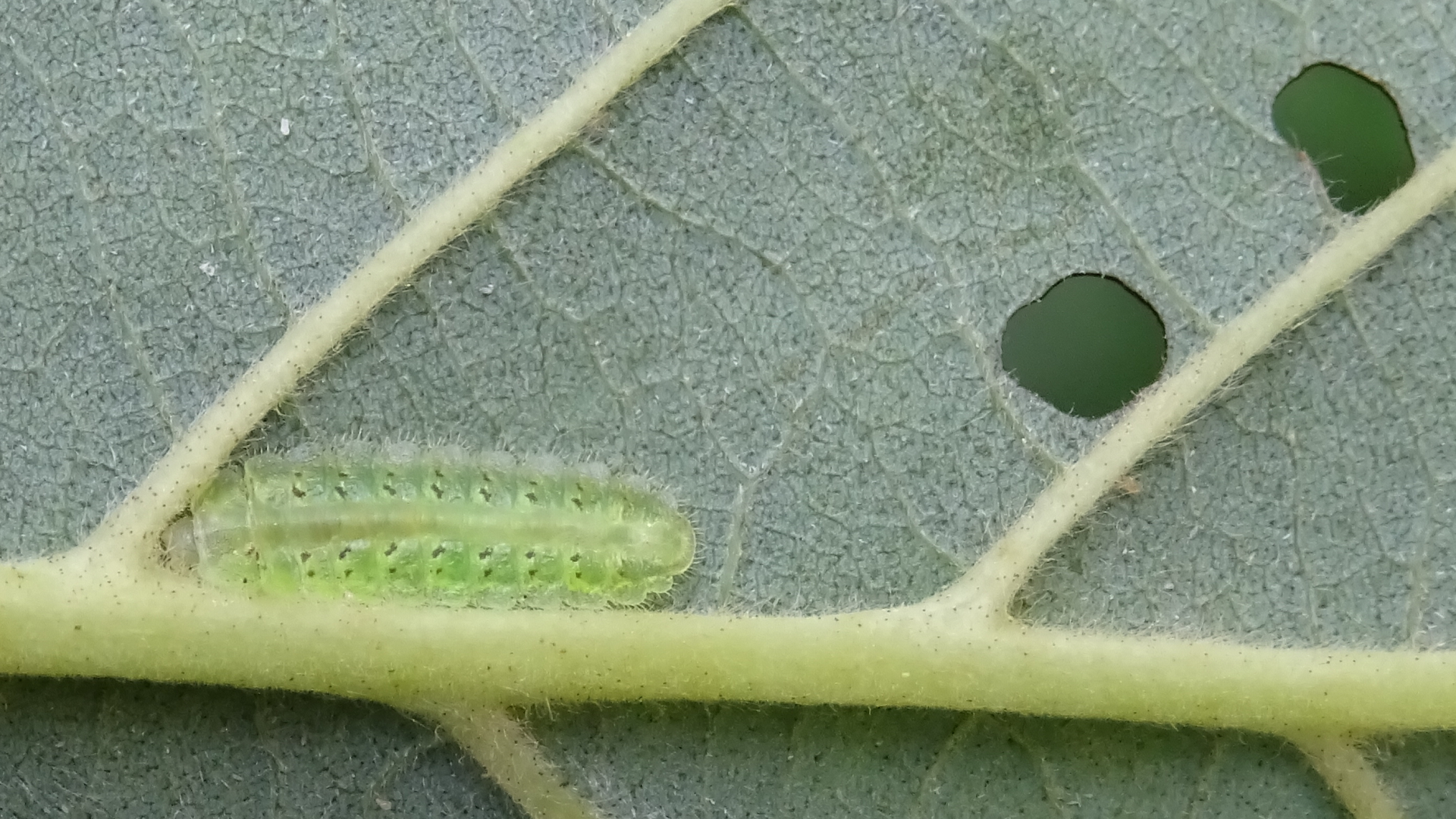
Slide title
Flat Alder-cutter Platycampus luridiventris
©Raymond Small TQ4792 11/09/2021
Button
Flat Alder-cutter Platycampus luridiventris is a dark brown or blackish Sawfly (6-7mm) with orangy legs that flies in May and June. The flat green larvae feed on alder leaves making roundish holes in the surface.
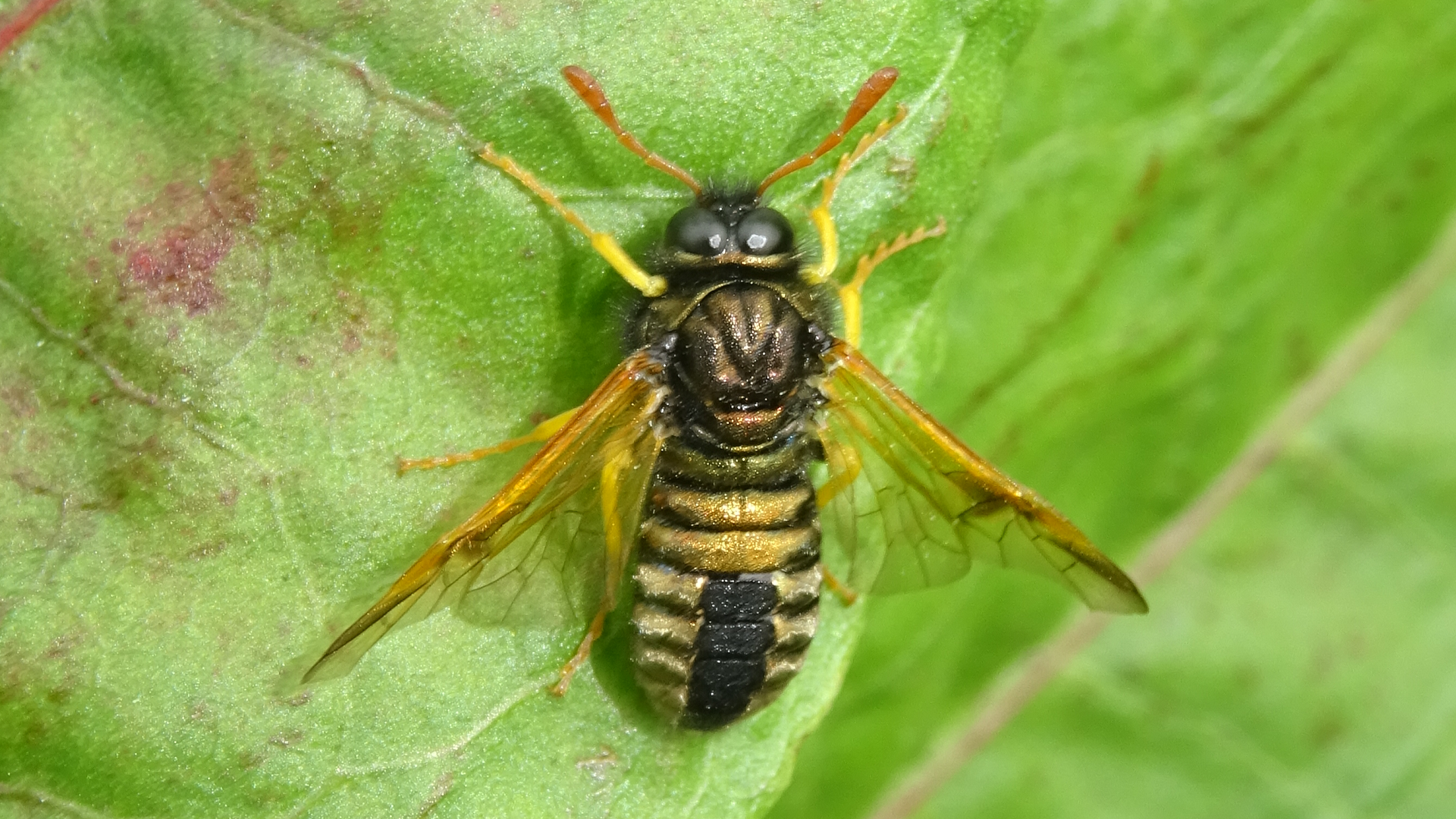
Slide title
Scabious Clubhorn Abia nitens
©Raymond Small TQ4792 16/05/2022
Button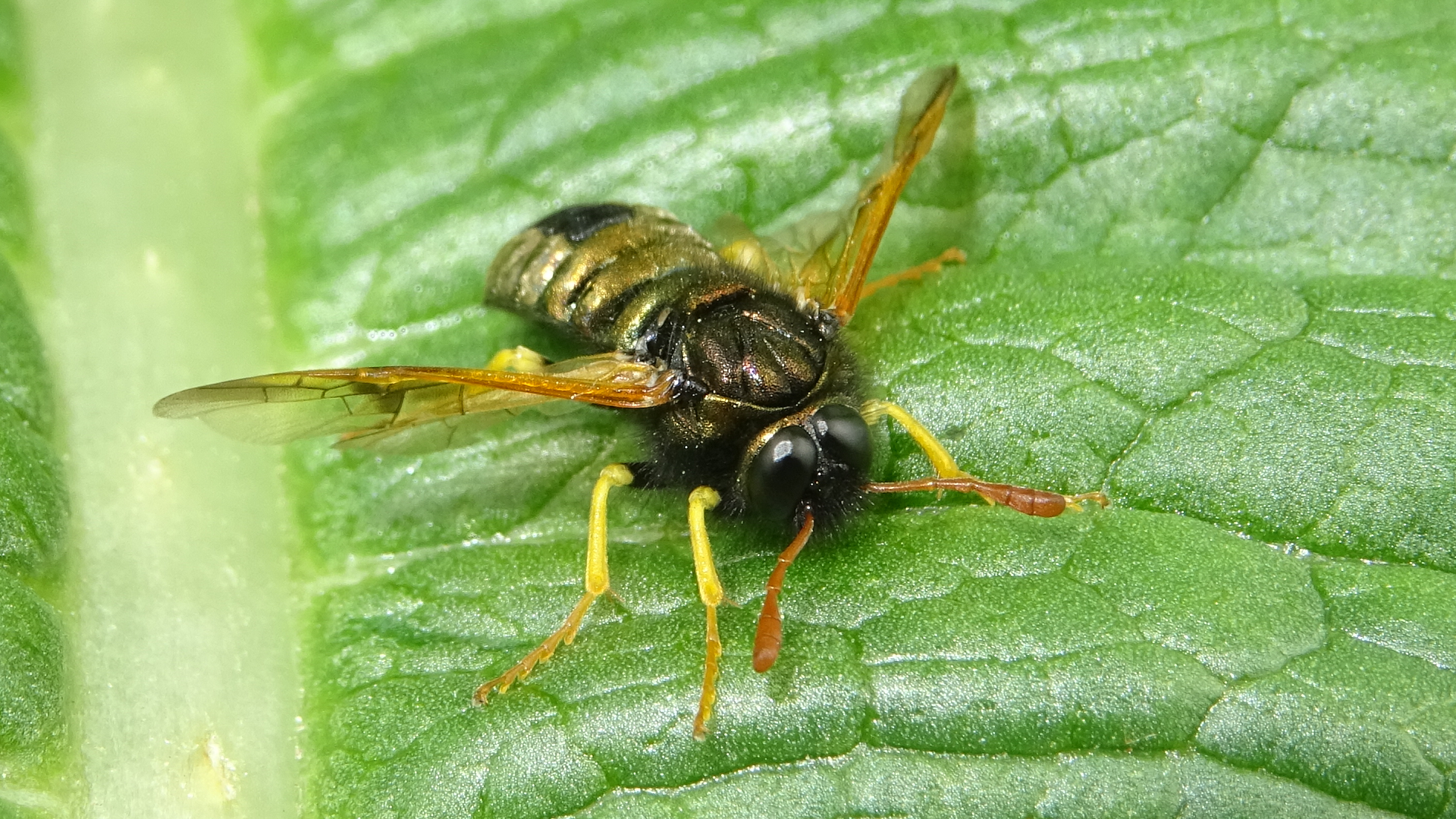
Slide title
Scabious Clubhorn Abia nitens
©Raymond Small TQ4792 16/05/2022
Button
Scabious Clubhorn Abia nitens (10mm) is a Sawfly that flies from May until August. Its larvae feed on Scabious and Cut-leaved Teasel.
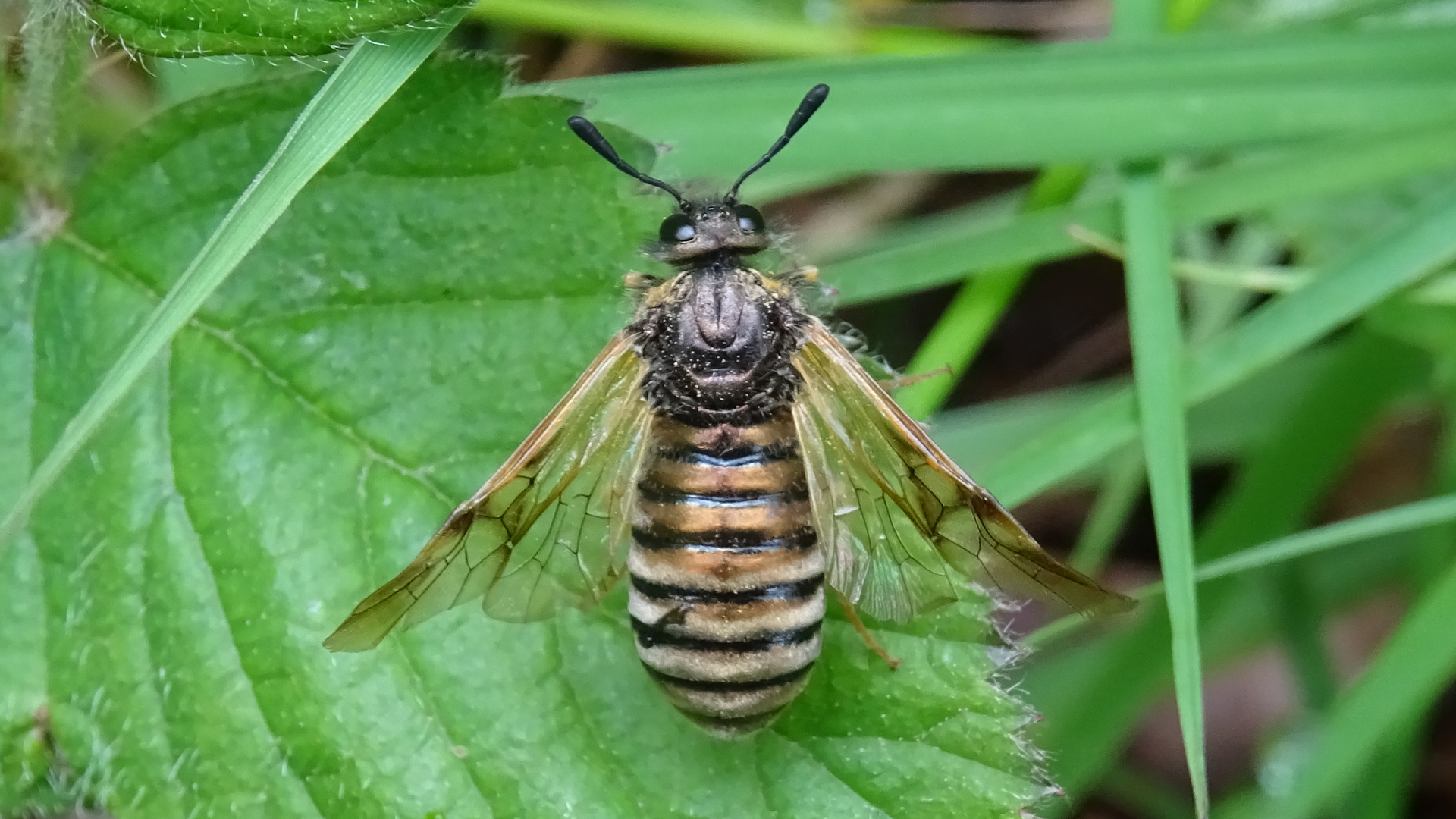
Slide title
Cryptic Clubhorn Abia aenea/lonicerae agg.
©Raymond Small TQ4793 07/05/2023
Button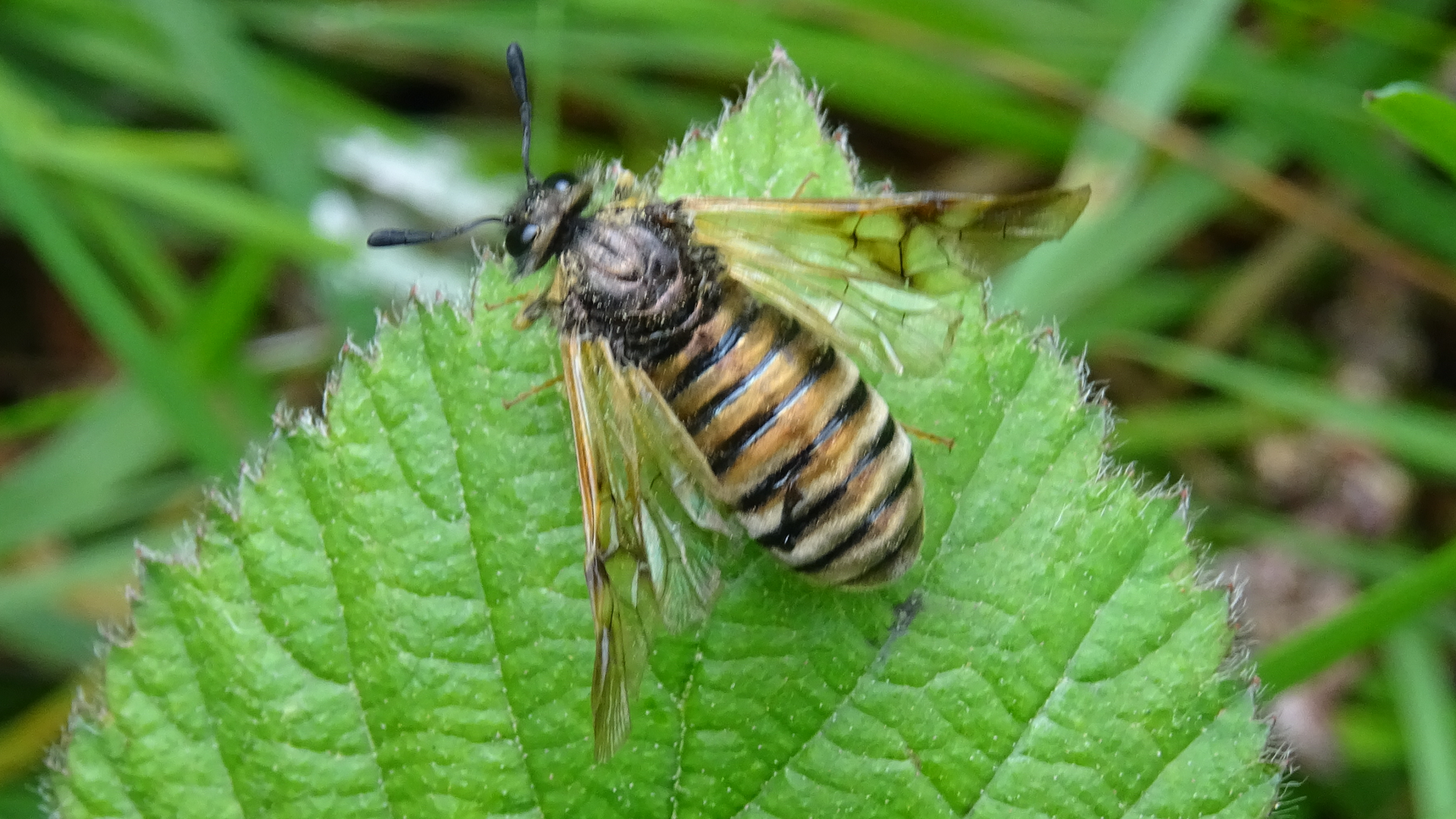
Slide title
Cryptic Clubhorn Abia aenea/lonicerae agg.
©Raymond Small TQ4793 07/05/2023
Button
Cryptic Clubhorn
Abia aenea/lonicerae agg. (12mm) flies from April until June. Adults of
A. aenea
and
A.
lonicerae
are very similar and often recorded as an aggregate. Adults of these species cannot normally be separated from photographs. The larvae of both species feed on Honeysuckle and Snowberry.
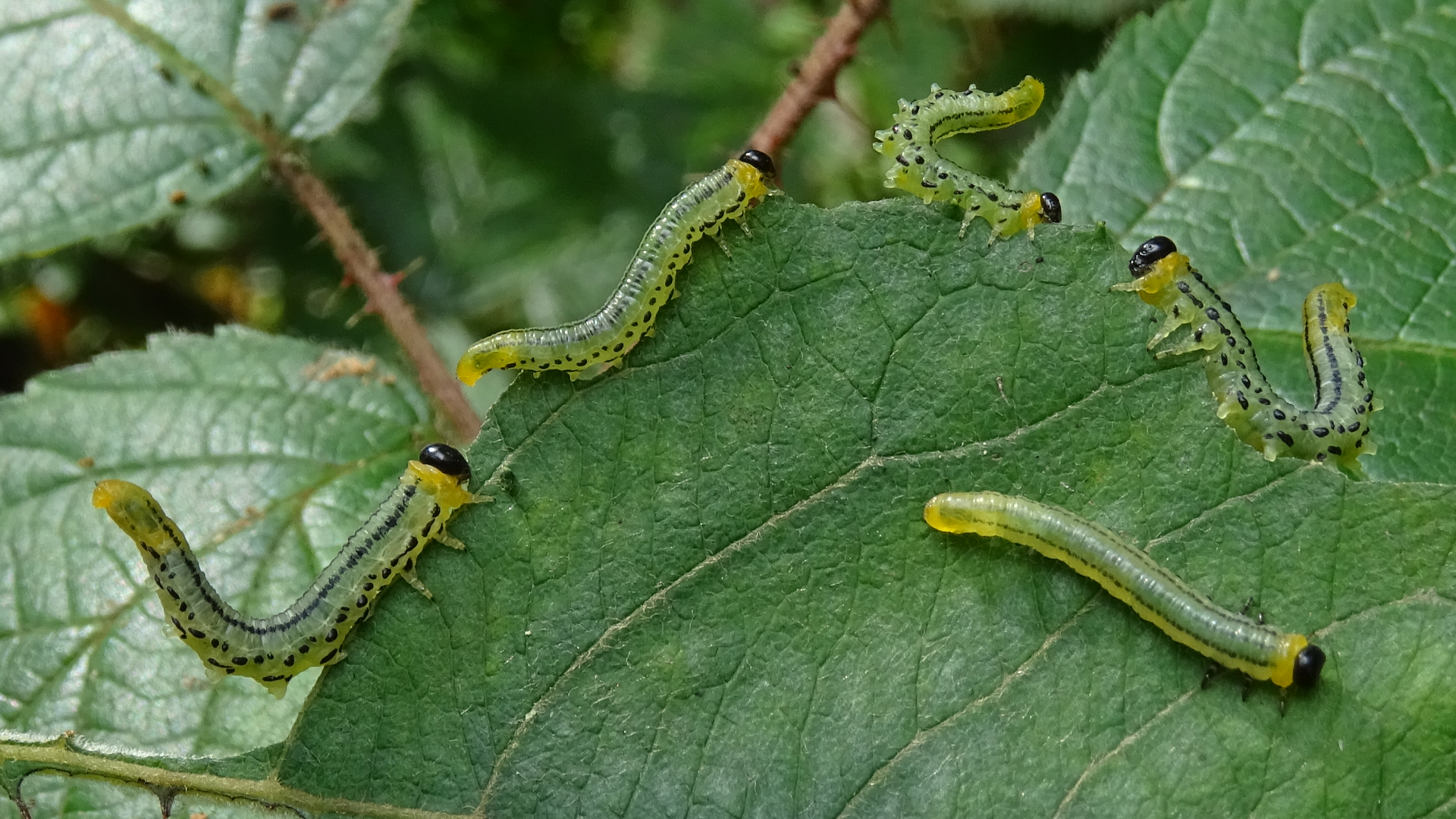
Slide title
Pavid Willow Nematine Euura pavida
©Raymond Small TQ4793 09/09/2021
Button
Slide title
Pavid Willow Nematine Euura pavida
©Raymond Small TQ4793 09/09/2021
Button
Slide title
Pavid Willow Nematine Euura pavida
©Raymond Small TQ4793 09/09/2021
Button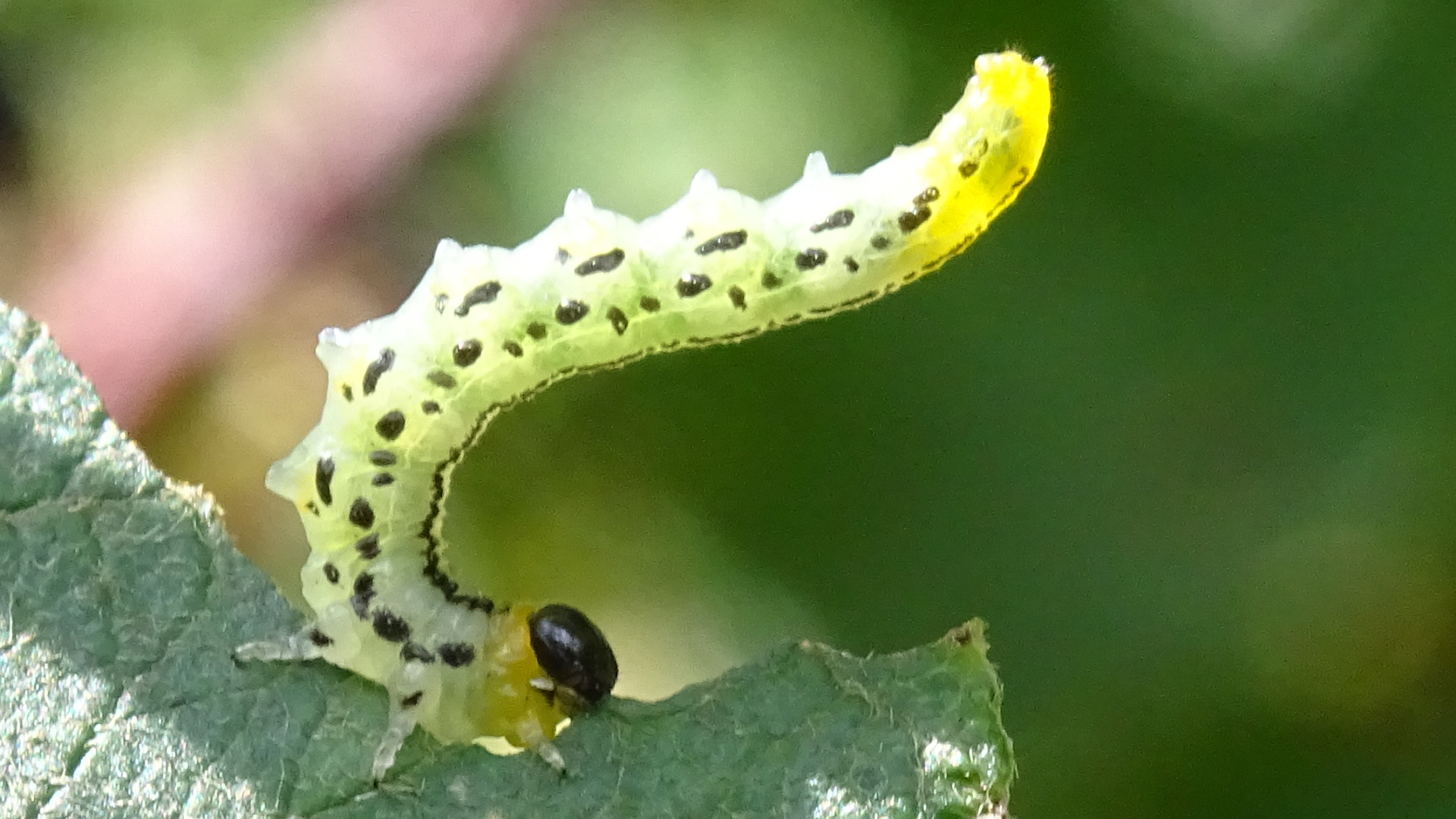
Slide title
Pavid Willow Nematine Euura pavida
©Raymond Small TQ4793 09/09/2021
Button
Pavid Willow Nematine Euura pavida (6-7mm) fly from May to June and July to September. Its larvae feed in groups on Sallow, Willow, Poplar and Alder. Formerly in the genus Nematus, but now Euura.

Slide title
Red-belted Cleaver Aglaostigma aucupariae
©Raymond Small TQ4892 08/04/2024
Button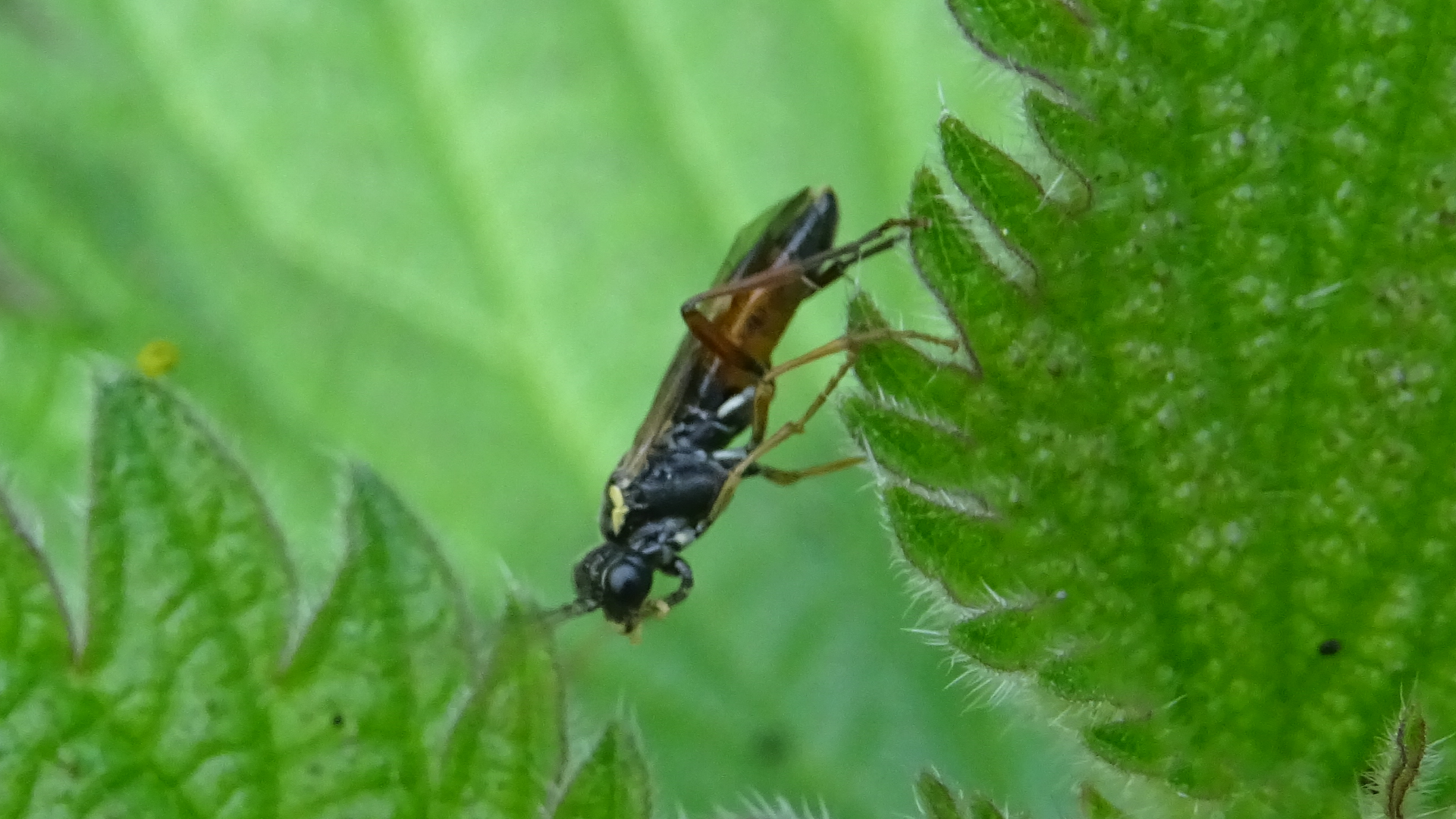
Slide title
Red-belted Cleaver Aglaostigma aucupariae
©Raymond Small TQ4892 08/04/2024
Button
Red-belted Cleaver
Aglaostigma aucupariae (7-9mm) is one of the first Sawflies to appear each spring. It flies from March to June. The larvae feed on Bedstraws.
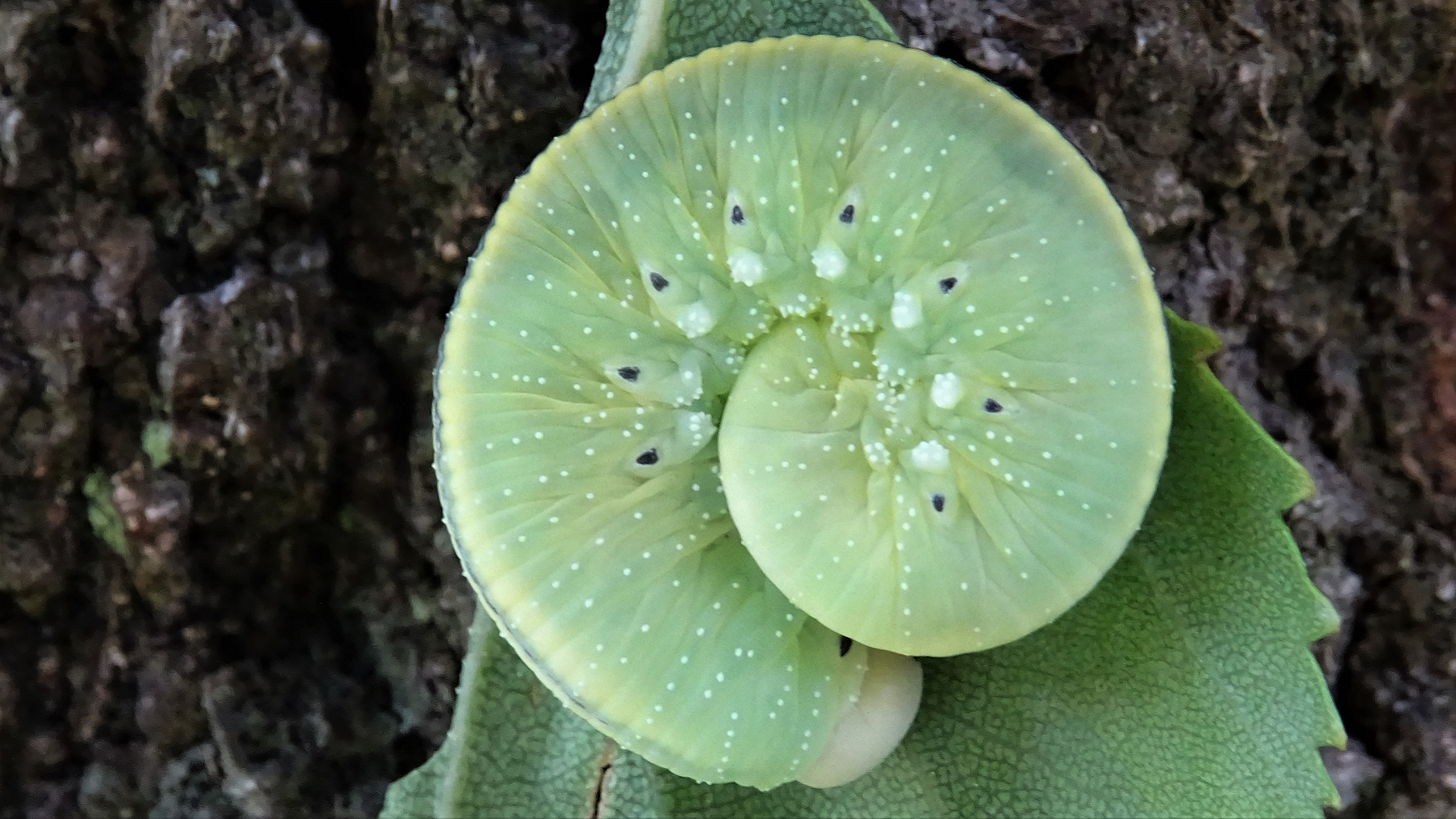
Slide title
Birch Sawfly Cimbex femoratus
©Raymond Small TQ4792 05/07/2023
Button
Slide title
Birch Sawfly Cimbex femoratus
©Raymond Small TQ4792 05/07/2023
Button
Birch Sawfly Cimbex femoratus has green larvae with a white head. The larvae feed on birches.
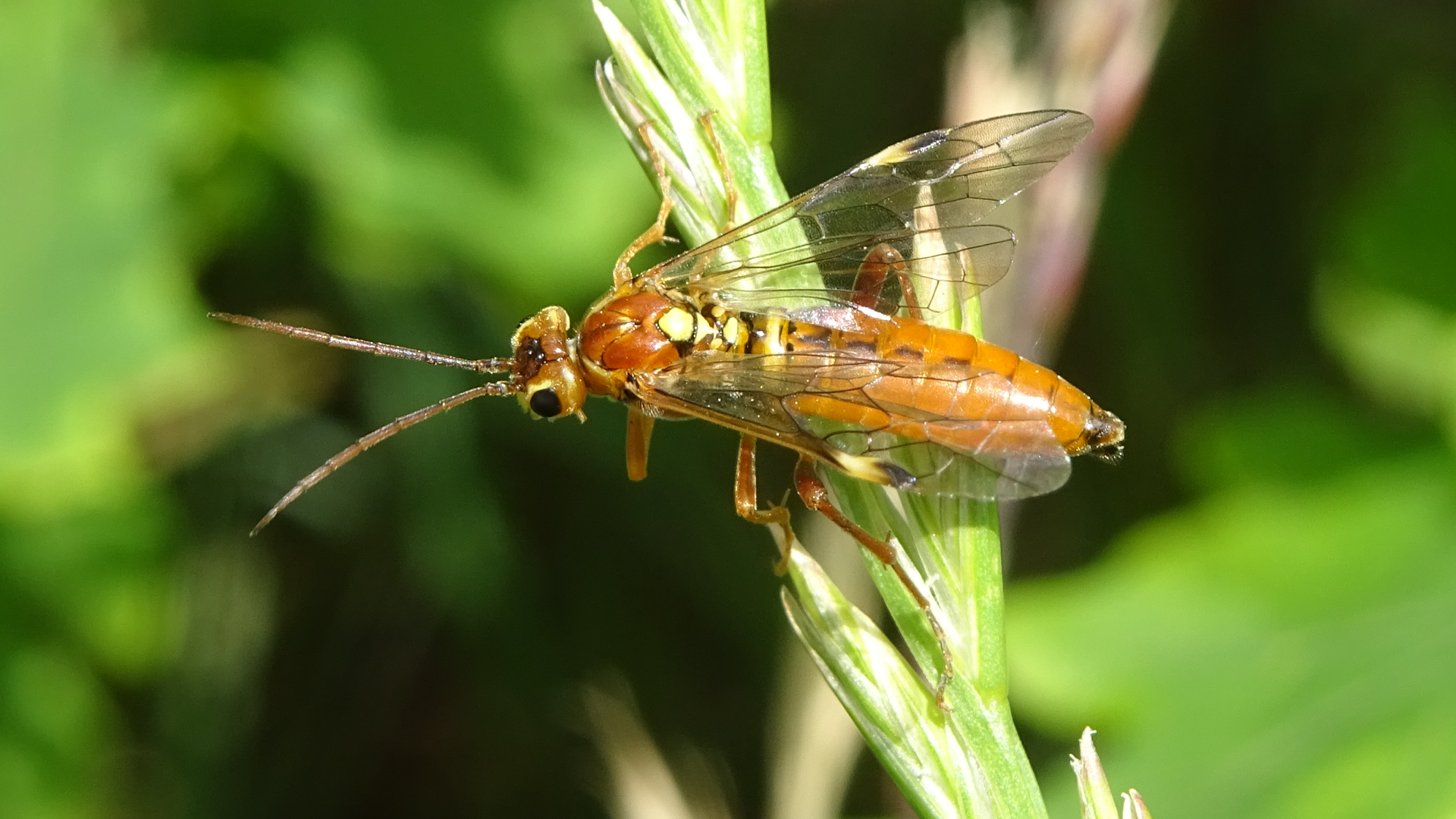
Slide title
Tenthredopsis
©Raymond Small TQ4792 12/06/2022
Button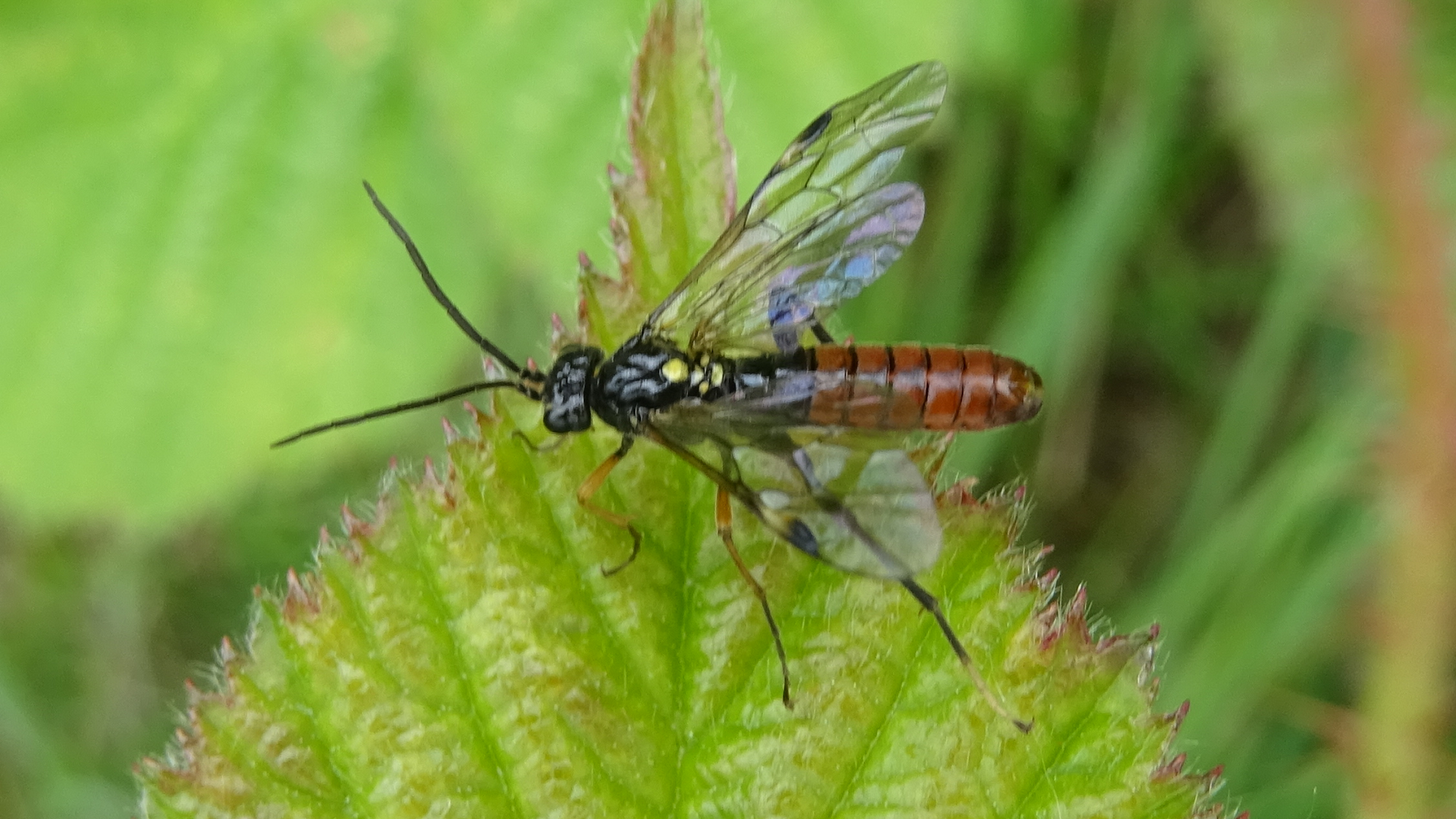
Slide title
Tenthredopsis
©Raymond Small TQ4792 30/05/2022
Button
Tenthredopsis
There are presently six British species of Tenthredopsis (7-12mm) as far is presently known. Some species have colour variation within a gender and also dimorphism between the genders. All species inhabit grassland, woodland edges and watercourses.
The larvae are nocturnal feeders on grass.
© hainaultforest.net. All rights reserved.
